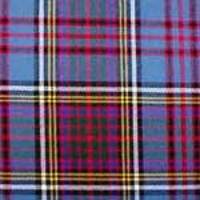

“ESP has made it back from the lowlands, did ye do battle on the English oer, on yer trip ESP? Tell me ye built spears twice the length of a man? Did ye unite the clans? Did ye…
Shhh! Relax William, I will tell you all about it, if you give me a minute, okay perhaps more than a minute, this is rather a muckle-long post! I suggest you grab a glass of your favorite beverage and if you have a slow connection, my apologies.

Ahh the long and arduous journey to Mordor, I mean the borders of Scotland.
Being a hobbit does have some distinct and obvious 757 ergonomic advantages, and sleep appears to come easily to these little creatures after the fourth Brandy Wine!
“Tricksy Jet-Setting Hobbities”
I also noticed that hobbits never eat airline food, preferring to consume their own Lembas Bread.

Elves also seem to have an advantage on transatlantic crossings. This one must have climbed into my hand luggage before we left the Patch and carefully evaded security…well it is an elf after all.
 Myself, on the other hand, was forced into an unnatural bolt-upright position on the plane, with my neck and head pushed down into my chest in the vane attempt to see some of the in-flight entertainment being played on the LCD on the back of the now reclined seat in front of me. Three-quarters into the journey and my legs apparently hatched a cunning plan against my well-being. While I drifted in and out of flight-consciousness they started to slowly wrap themselves in a constrictor fashion around my neck in a futile attempt to regain circulation and get selfishly comfortable. I awoke just in time for “breakfast” with one leg over my right shoulder, and my foot propping up the back of my head like an ill-conceived pillow, how this could have happened, I had absolutely no idea. I have never done yoga in my life.
Myself, on the other hand, was forced into an unnatural bolt-upright position on the plane, with my neck and head pushed down into my chest in the vane attempt to see some of the in-flight entertainment being played on the LCD on the back of the now reclined seat in front of me. Three-quarters into the journey and my legs apparently hatched a cunning plan against my well-being. While I drifted in and out of flight-consciousness they started to slowly wrap themselves in a constrictor fashion around my neck in a futile attempt to regain circulation and get selfishly comfortable. I awoke just in time for “breakfast” with one leg over my right shoulder, and my foot propping up the back of my head like an ill-conceived pillow, how this could have happened, I had absolutely no idea. I have never done yoga in my life.

By the end of the flight, and judging from the reactions of the flight attendants, I think I was beginning to resemble a crazed Dr Strangelove character, smacking my legs with a gloved fist to see if I could feel anything. It is no fun being tall on a plane, no fun at all. After a blurry, high-speed taxi ride from Glasgow airport we all finally emerged into some traditional bracing Scottish air. We dragged out our multitude of oddly sized cases that ironically mimicked my “everything but the kitchen sink” rainwater collection “system”, and clambered wearily toward our holiday cottage.
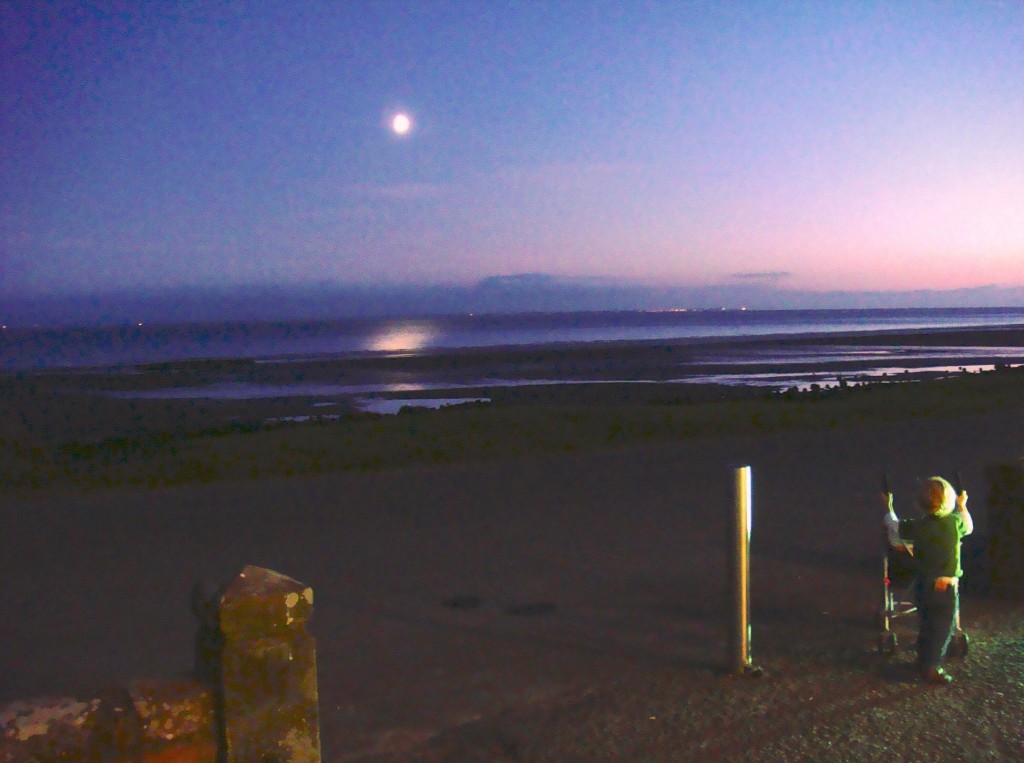 The brisk wind as we exited the cab came as a shock to the system, my blood must have thinned significantly from this summer’s scorching temperatures in Central Texas, or was it from my red-wine consumption? Whichever, it felt cold.
The brisk wind as we exited the cab came as a shock to the system, my blood must have thinned significantly from this summer’s scorching temperatures in Central Texas, or was it from my red-wine consumption? Whichever, it felt cold.
The ESP tribe (non Naboo) had finally made it to Powfoot, a tiny coastal village on the Solway Firth, in South-West Scotland.
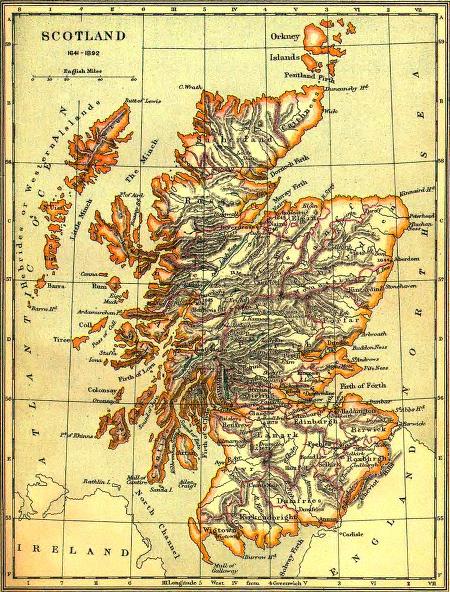 You can see the Solway Firth written at an angle at the bottom of this map above and to the left of the “E” in England.
You can see the Solway Firth written at an angle at the bottom of this map above and to the left of the “E” in England.
After the long, and I have to say, well behaved flight, the airborne unit hunkered down under some warm quilts in their barracks to recharge their batteries, and reset their tiny internal body clocks. Ahh, home sweet new home.
We were awoken the next morning by the distinctive smell of silage and a local farmer, on a rather ramshackle tractor. He left us with a dozen of the most amazing fresh eggs which were used to prepare one of my all time favorite heart-attack-on-a-plate dishes…
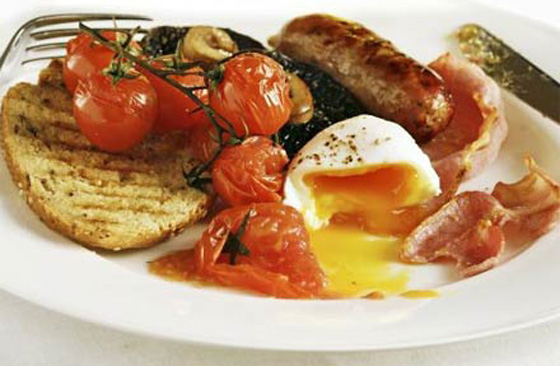 The traditional English Breakfast, (promise me not to tell William). Fueled up and ready to go out, our first port of call was a visit to a car-boot sale. Basically for any non-British readers this is a large field that people drive onto and then sell stuff they no longer want out of the back of their cars, a portable flea-market.
The traditional English Breakfast, (promise me not to tell William). Fueled up and ready to go out, our first port of call was a visit to a car-boot sale. Basically for any non-British readers this is a large field that people drive onto and then sell stuff they no longer want out of the back of their cars, a portable flea-market.
Although it never occurred to me to get a picture of the cars and merchandise, I did get a picture of the field that the event is held in every week…and oh, how soft the grass was. No stickers, no thorns, no poison ivy. A dandelion picking frenzy naturally ensued.
Followed by some…

Dandelion Taraxcum officinale
chains.
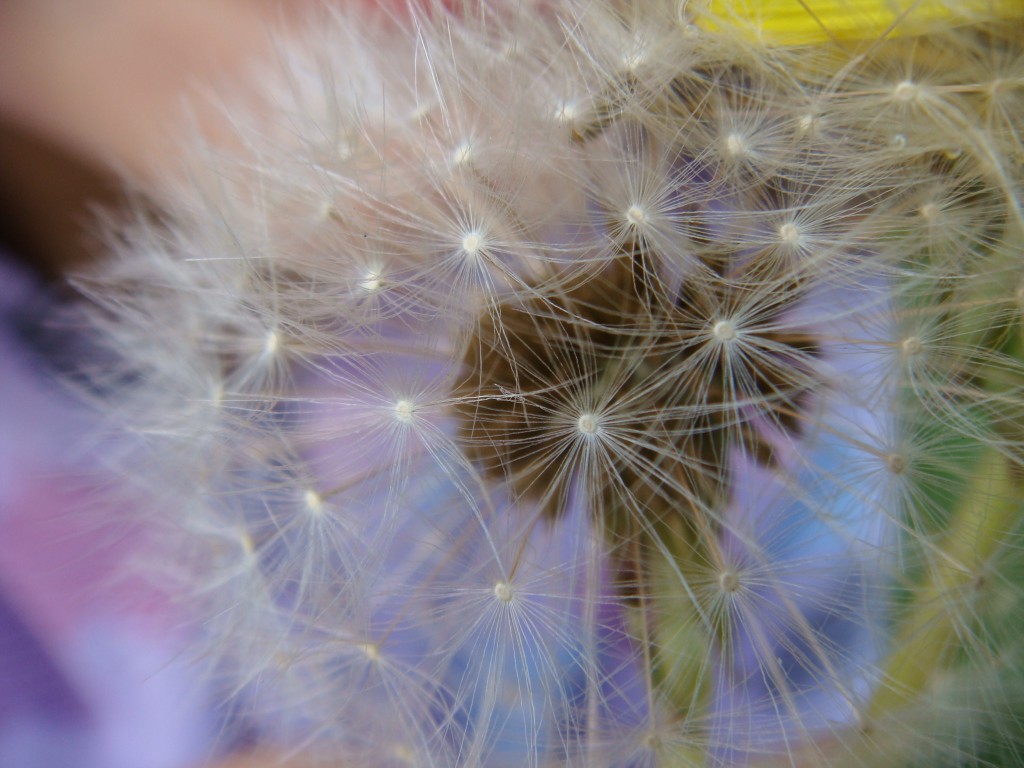
The Dandelion is a very common herb from the sunflower family. The designation “officinale” indicates that the herb was officially listed as a medicinal. Young leaves can be eaten as spring greens. Roots can be ground and used as a coffee substitute, mild laxative, or to treat heartburn. Tea and wine can be made from the flowers, and the flowers can be fried in batter and eaten, a little healthier perhaps than the infamous Scottish deep-fried Mars Bar.
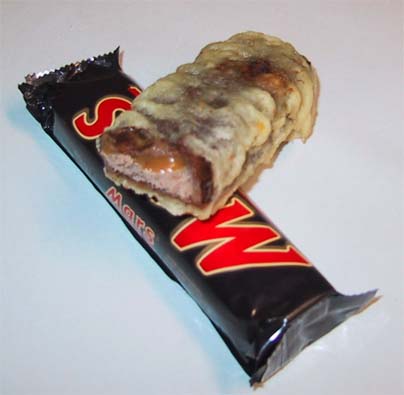 The Car-boot sale was a great success, fitting us out with warmer clothes that cost only a pound or two, clothes that would become invaluable on the colder days of our trip, crucial for…
The Car-boot sale was a great success, fitting us out with warmer clothes that cost only a pound or two, clothes that would become invaluable on the colder days of our trip, crucial for…
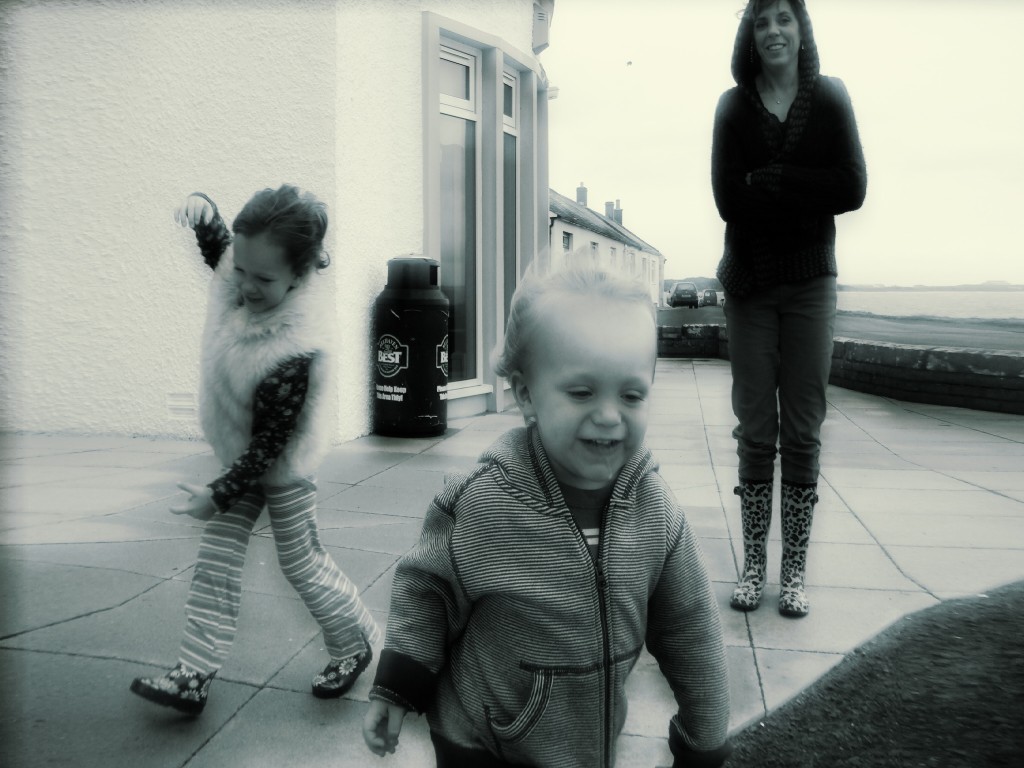 cold and windy excursions to the local pub,
cold and windy excursions to the local pub,
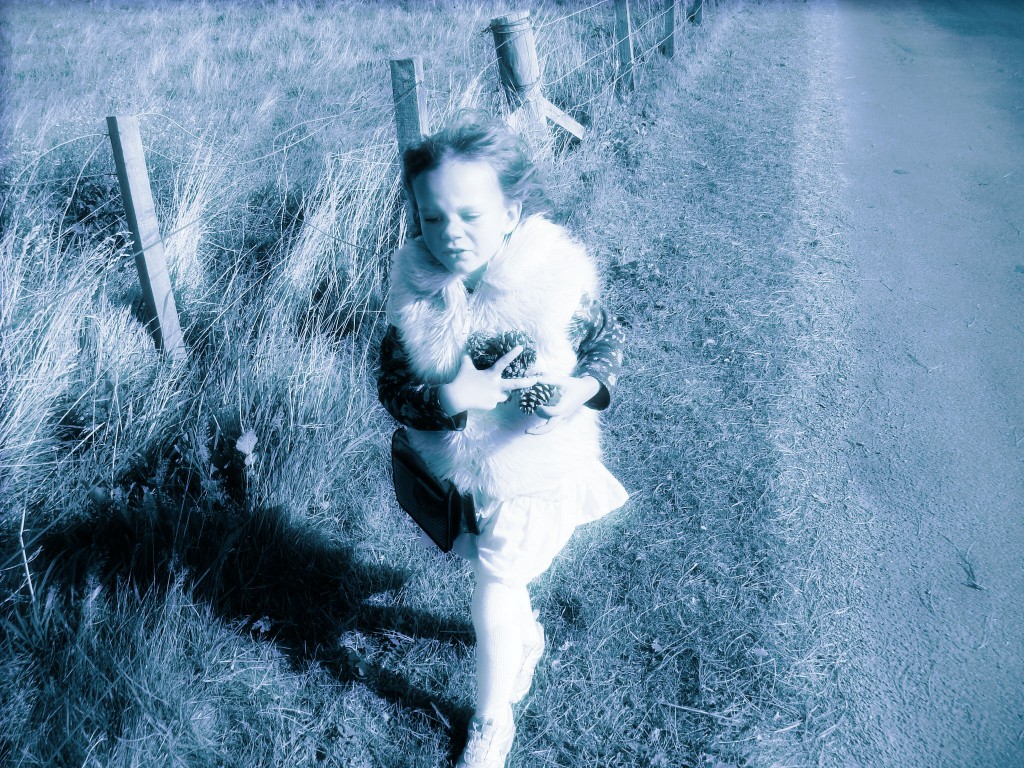 impromptu pine cone collecting along the coastal road and for
impromptu pine cone collecting along the coastal road and for
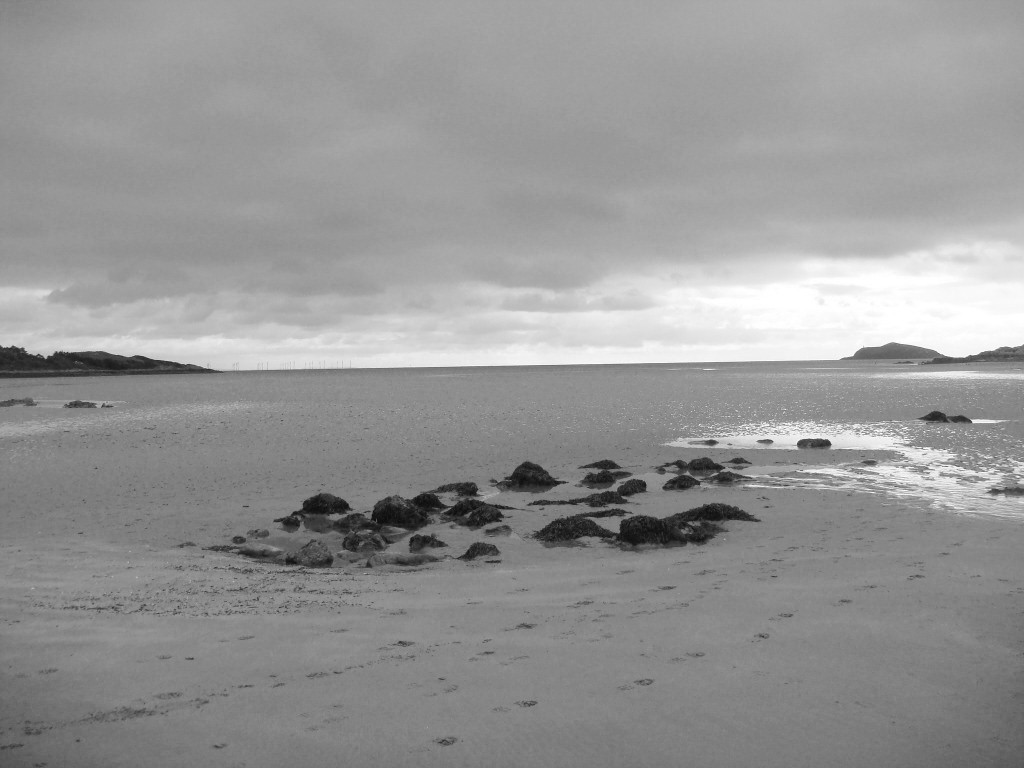 cool days flying kites on the beach, (knotted handkerchiefs on our heads, naturally). If you look closely on the horizon, you can see the large wind turbines that are popping up all over Scotland.
cool days flying kites on the beach, (knotted handkerchiefs on our heads, naturally). If you look closely on the horizon, you can see the large wind turbines that are popping up all over Scotland.
The Solway Firth estuary is the third largest estuary in the UK and it has a reputation for its incredibly fast tides, hidden channels and deadly quicksands. A perfect place for the kids! It is said in local folklore that a galloping horse cannot out-run the water as it rushes into the estuary from the incoming tide.
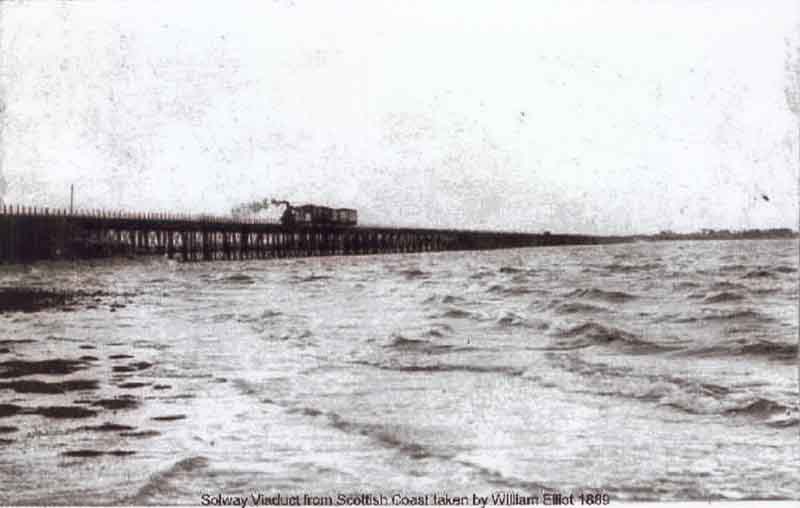 Between 1869 and 1921, the estuary was crossed by the Solway Junction Railway viaduct, the line was built to transport iron ore, but the railway was not a financial success.
Between 1869 and 1921, the estuary was crossed by the Solway Junction Railway viaduct, the line was built to transport iron ore, but the railway was not a financial success.
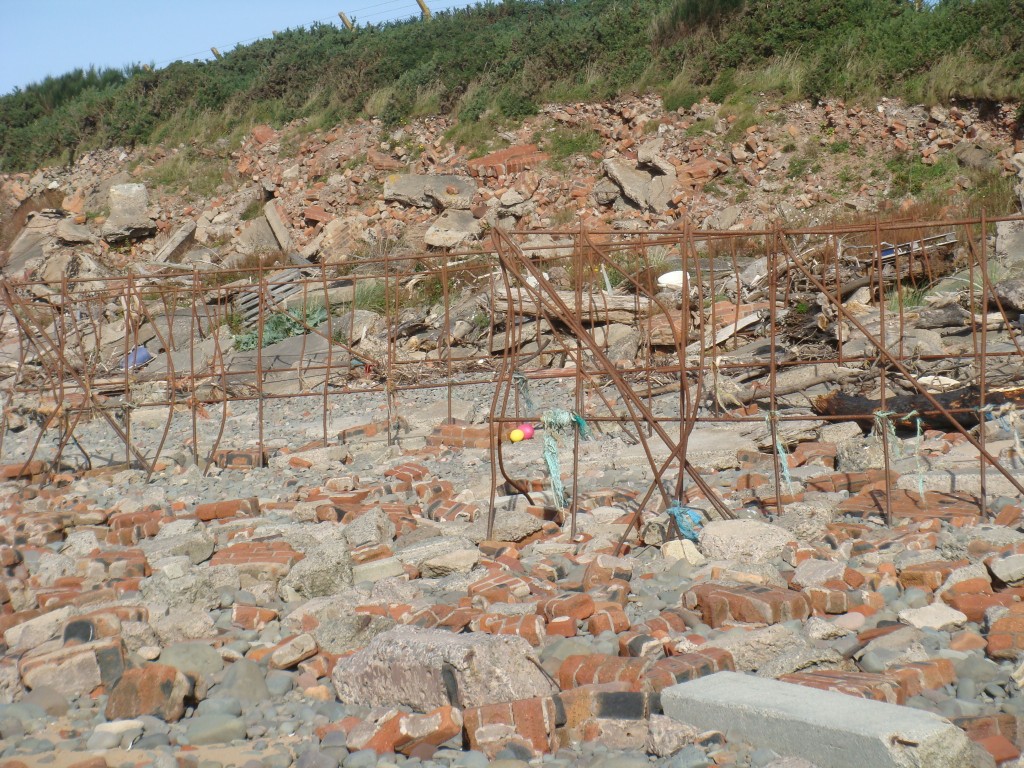 After the railway ceased operating, the bridge provided a popular footpath for local residents (Scotland was “dry” on a Sunday) to travel to England where a pint or ten frothing ales could be had before the long breezy, bridge-stagger home. It would have been a great place for a fish and chip van. At the end of January 1881 a freak ice event in the Solway destroyed a couple of sections of the bridge
After the railway ceased operating, the bridge provided a popular footpath for local residents (Scotland was “dry” on a Sunday) to travel to England where a pint or ten frothing ales could be had before the long breezy, bridge-stagger home. It would have been a great place for a fish and chip van. At the end of January 1881 a freak ice event in the Solway destroyed a couple of sections of the bridge
What was left of the viaduct was finally demolished between 1931 and 1933, I took a walk down the beach to see what was left of it…not pretty!
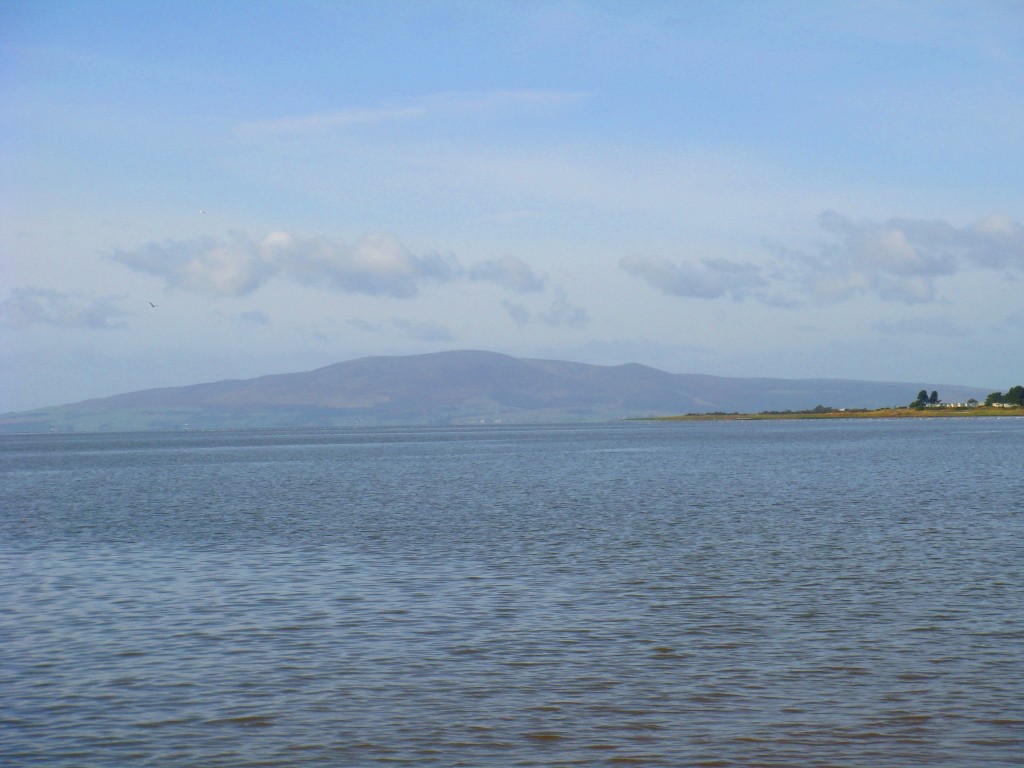 Though the sight looking back across the Solway toward the mountain of Criffel made the walk worthwhile.
Though the sight looking back across the Solway toward the mountain of Criffel made the walk worthwhile.
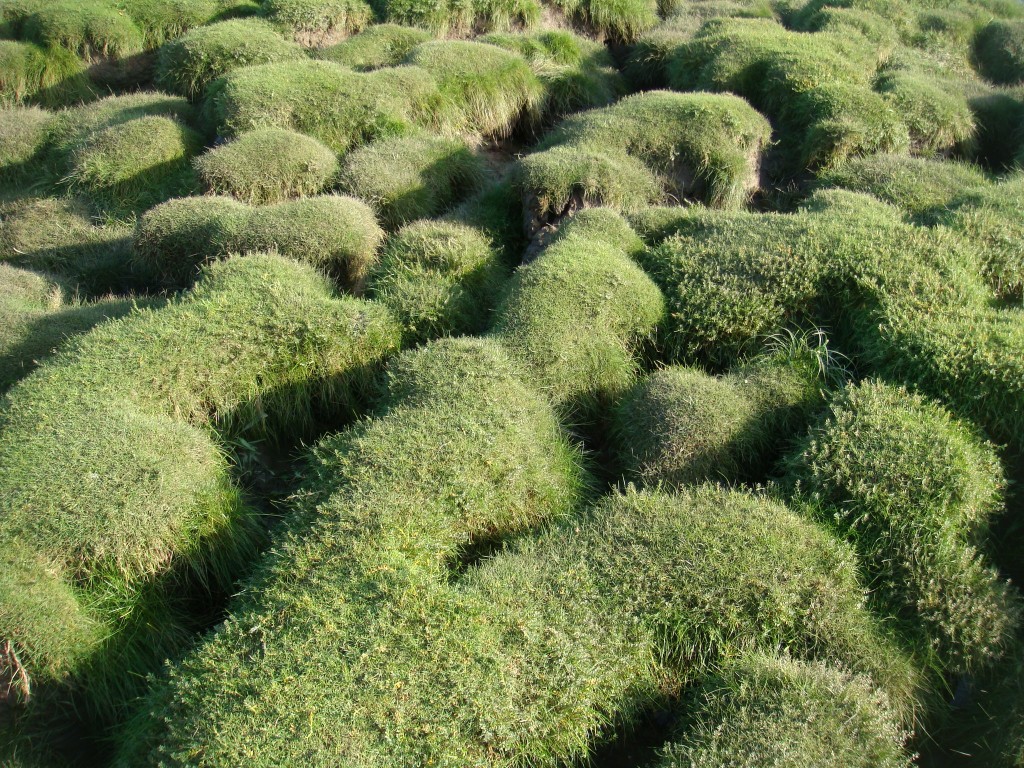 In areas all down the Northern coastline of the Solway you can find these amazing erosional terraces cut into the Puccinellia-dominated high-marsh surface. Puccinellia, or Common Salt-Marsh grass is a genus of grasses which are known as alkali grass. These grasses grow in wet environments, often in saline or alkaline conditions, forming an incredibly dense mat of vegetation.
In areas all down the Northern coastline of the Solway you can find these amazing erosional terraces cut into the Puccinellia-dominated high-marsh surface. Puccinellia, or Common Salt-Marsh grass is a genus of grasses which are known as alkali grass. These grasses grow in wet environments, often in saline or alkaline conditions, forming an incredibly dense mat of vegetation.
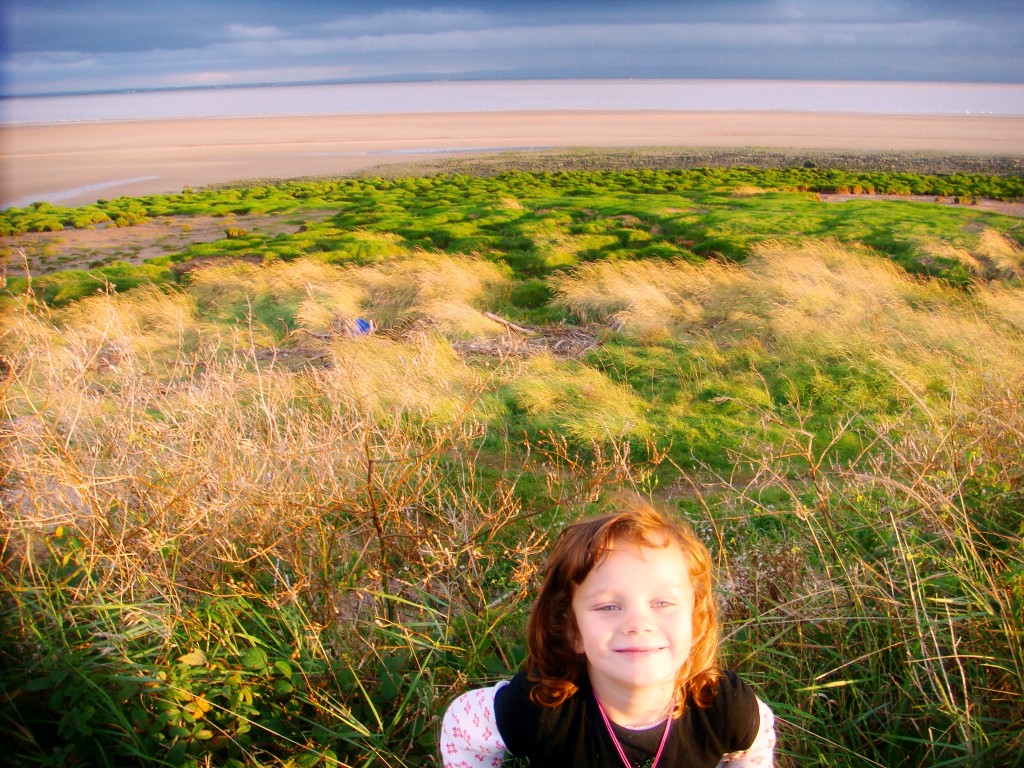 These mounds provided me with a constant state of panic at the prospect of a twisted ankle of broken leg as my antelopes hopped from one lump to another.
These mounds provided me with a constant state of panic at the prospect of a twisted ankle of broken leg as my antelopes hopped from one lump to another.
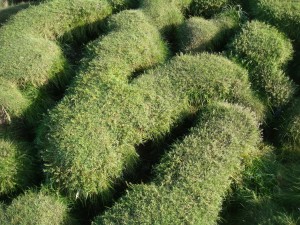
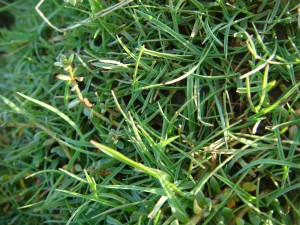
These grassy puzzle pieces react and adjust to sea level and to the shifting positions of the streams that stream through them, with every passing tide. These active marshes are terraced with as many as four levels, which reflect periodic shifts and meandering of channels in the marshland or periods of increased tidal scour when high tides co-inside with severe storms during periods of strong winds.
Further past the marshes there are expansive mud-flats with the occasional tiny sprig of this unidentified, brightly colored. sea-weed. Another coastal feature visible from out cottage was this circular feature…any guesses what this is?
Here is a clue:
Yes, this used to be a Victorian swimming pool. I surmise that the tide would fill this up so that water was still available to swim or paddle in when the tide went out. I guess over the years the sand has built up around this bizarre structure. The land mass on the horizon is the English Cumbrian coastline.
And the sun went down once again on the cottage.
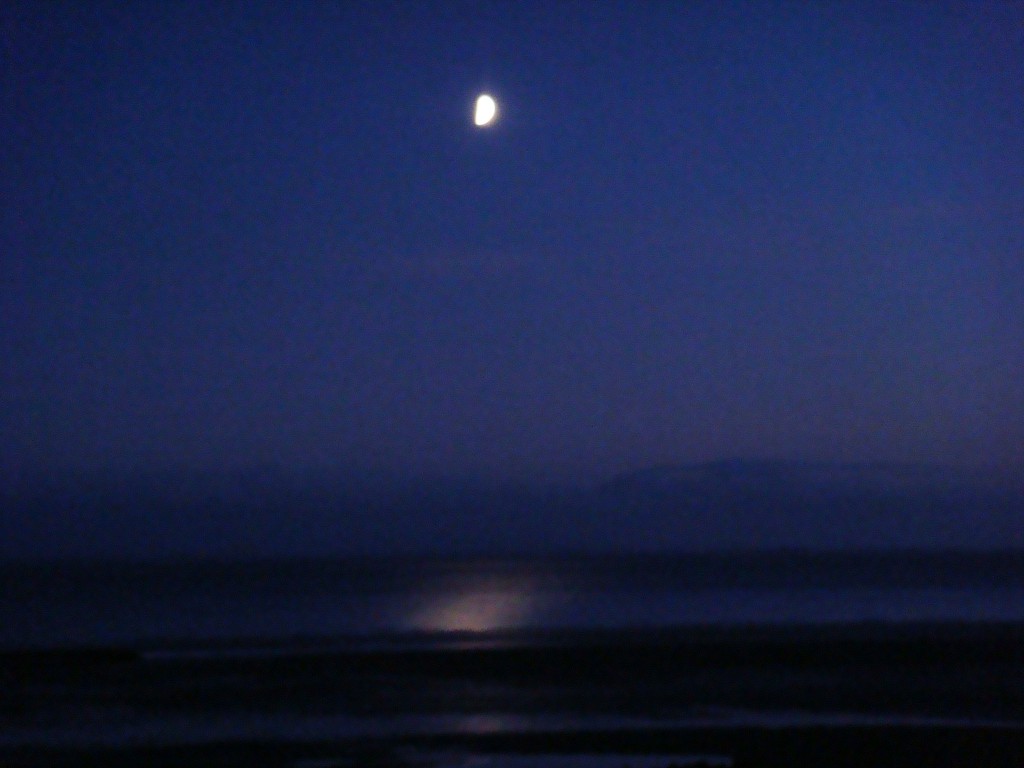 One of the brightest stars in the sky as it turns out is actually the sun hitting the space station! But I could not get a good shot of it, so you will have to settle for the moon instead. And for a night-time story pertinent to the area…
One of the brightest stars in the sky as it turns out is actually the sun hitting the space station! But I could not get a good shot of it, so you will have to settle for the moon instead. And for a night-time story pertinent to the area…
The Solway Firth Photo, 1964 (Spaceman)

Some days later Mr Templeton got his photographs processed by the chemist, who said that it was a pity that the man who had walked past had spoilt the best shot of Elizabeth holding a bunch of flowers. Jim was puzzled. There had been nobody else on the marshes nearby at the time.
But sure enough, on the picture in question there was a figure in a silvery white space suit projecting at an odd angle into the air behind the girl’s back, as if an unwanted snooper had wrecked the shot.
The case was reported to the police and taken up by Kodak, the film manufacturers, who offered free film for life to anyone who could solve the mystery when their experts failed.
It was not, as the police at first guessed, a simple double exposure with one negative accidentally printed on top of another during processing. It was, as Chief Superintendent Oldcorn quickly concluded, just “one of those things… a freak picture.” source: by Landon Howell
Moving on.. another full English breakfast, another mild heart twinge, and a day trip out to…
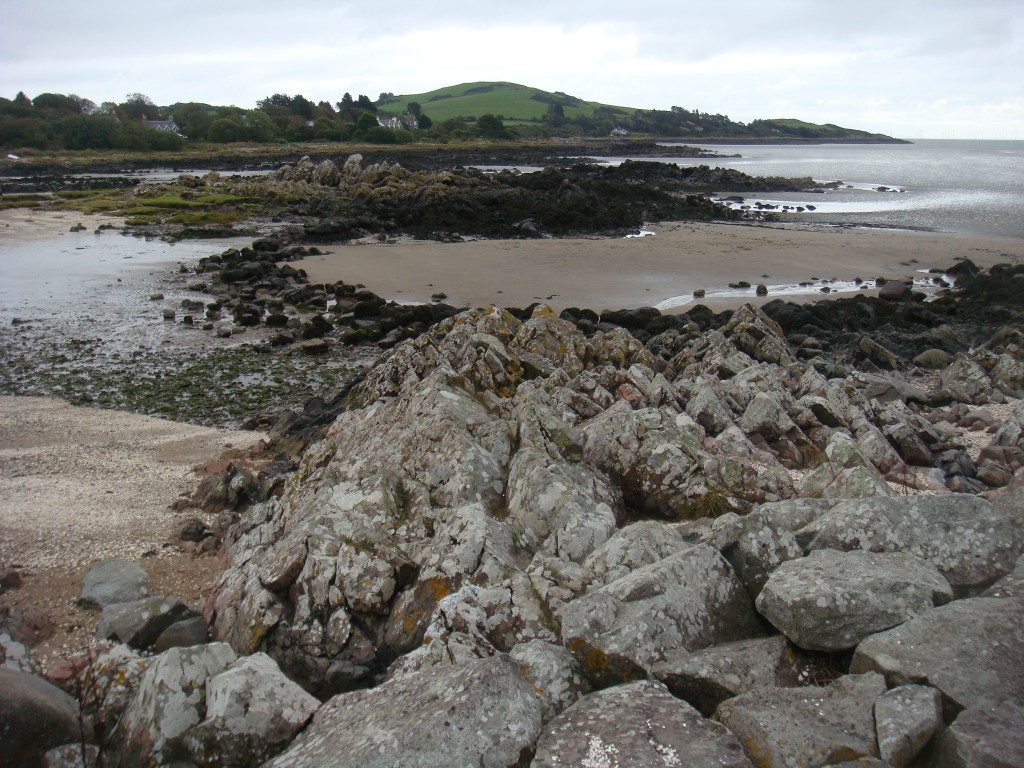 the aptly named village of Rockcliff, further down the Dumfries and Galloway coastline.
the aptly named village of Rockcliff, further down the Dumfries and Galloway coastline.
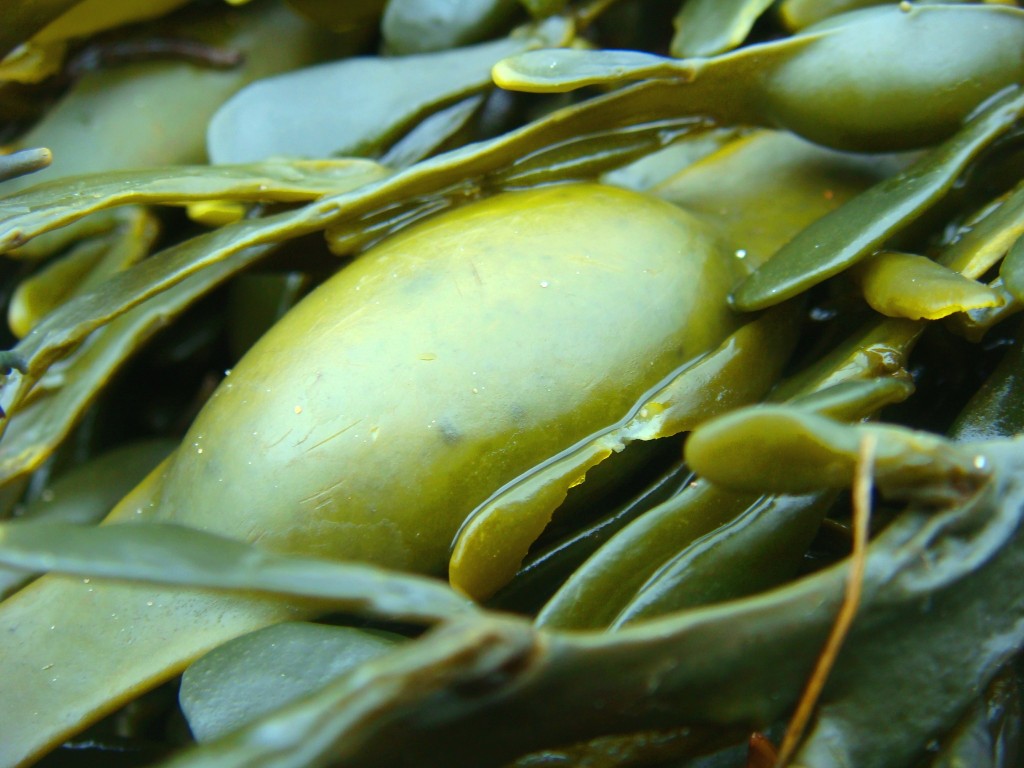
Lots of rock pools, lots of seaweed (it is not called sea-WEED, for nothing you know, and even more sea shells. I pushed aside some of this seaweed with my boot…
to reveal a bunch of these toffee-apple red sea-anemones.
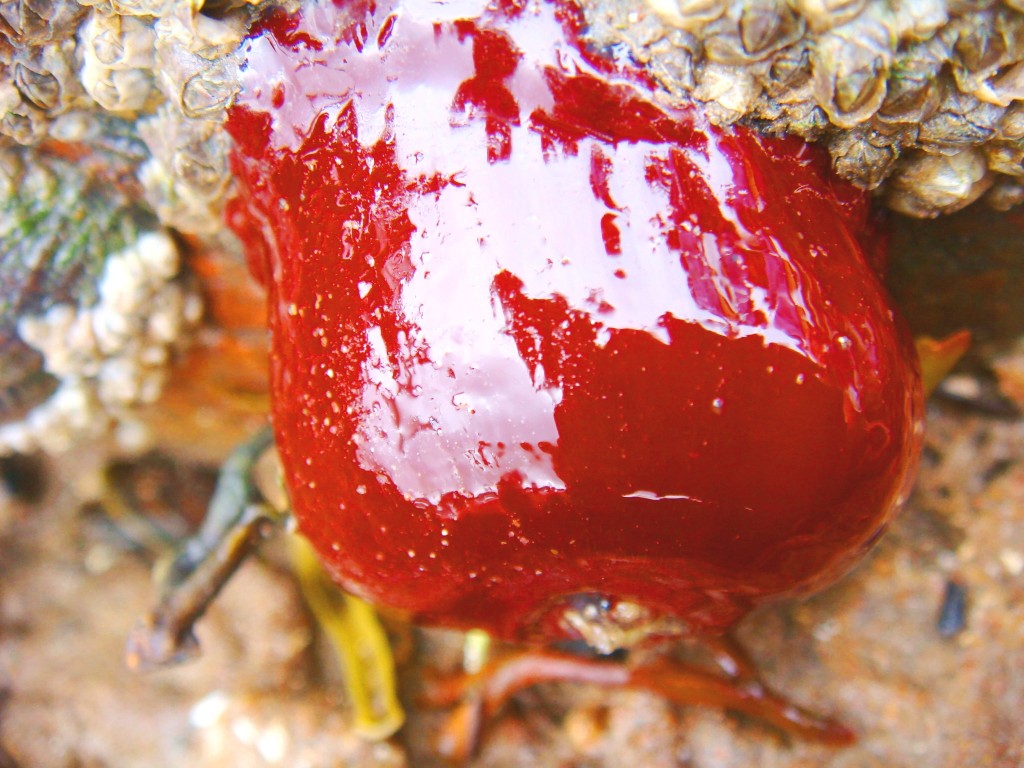 Guess who was obsessed with the rock pools?
Guess who was obsessed with the rock pools?
Yup, he was in up to his shins in water before we had a chance to say “don’t go into the rock pool with your shoes and socks on”.
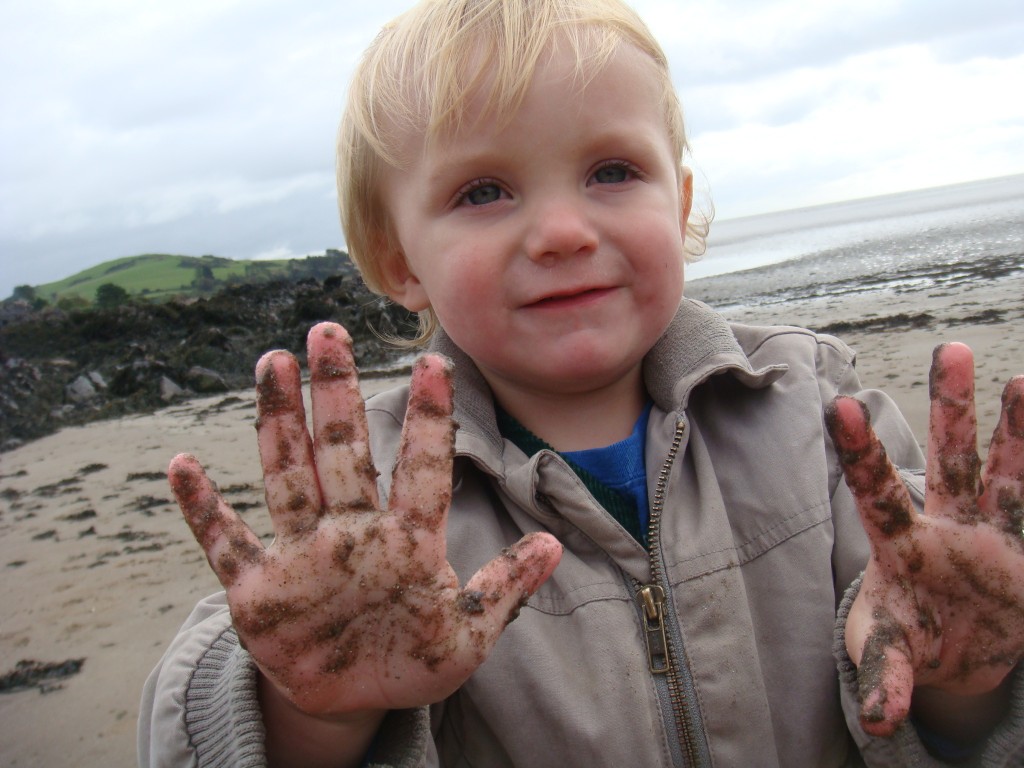 oh yes, he was in hog’s heaven.
oh yes, he was in hog’s heaven.
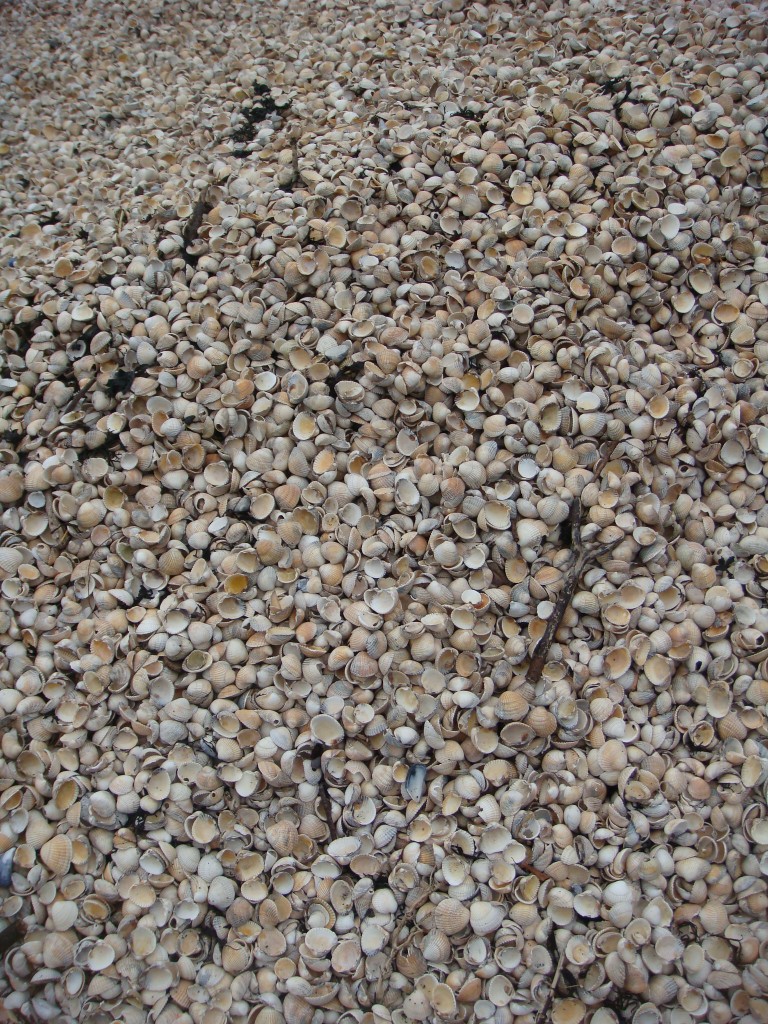 And guess who was obsessed with the sea-shells? This part of the beach was so deep in shells it was hard to walk!
And guess who was obsessed with the sea-shells? This part of the beach was so deep in shells it was hard to walk!
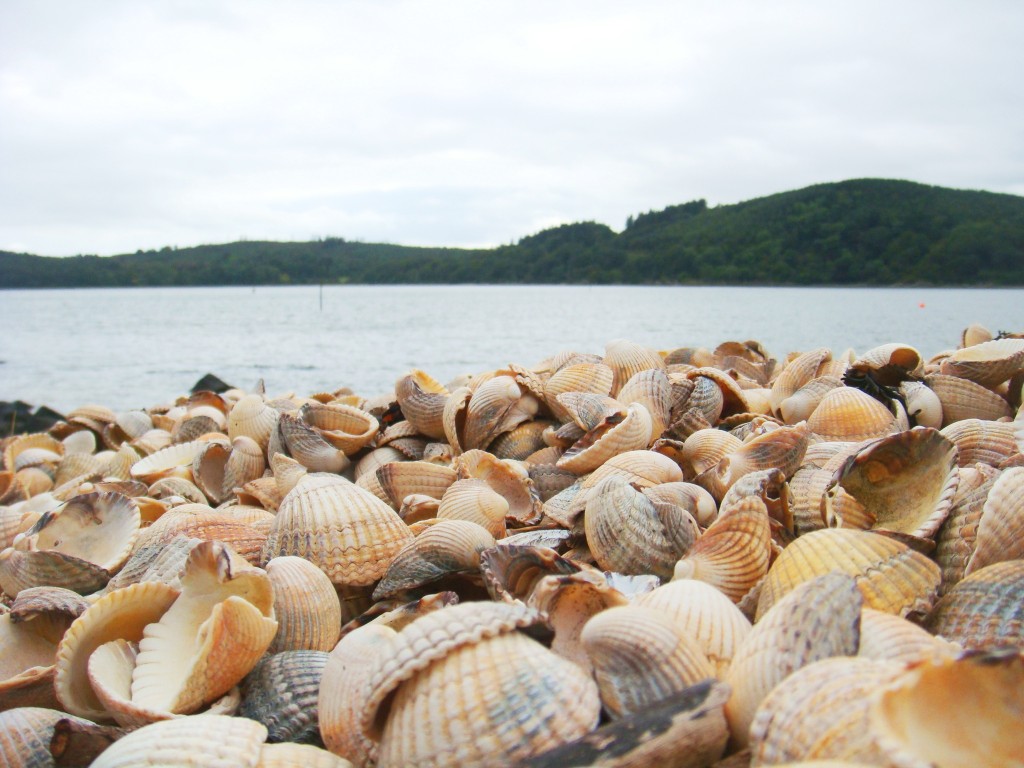
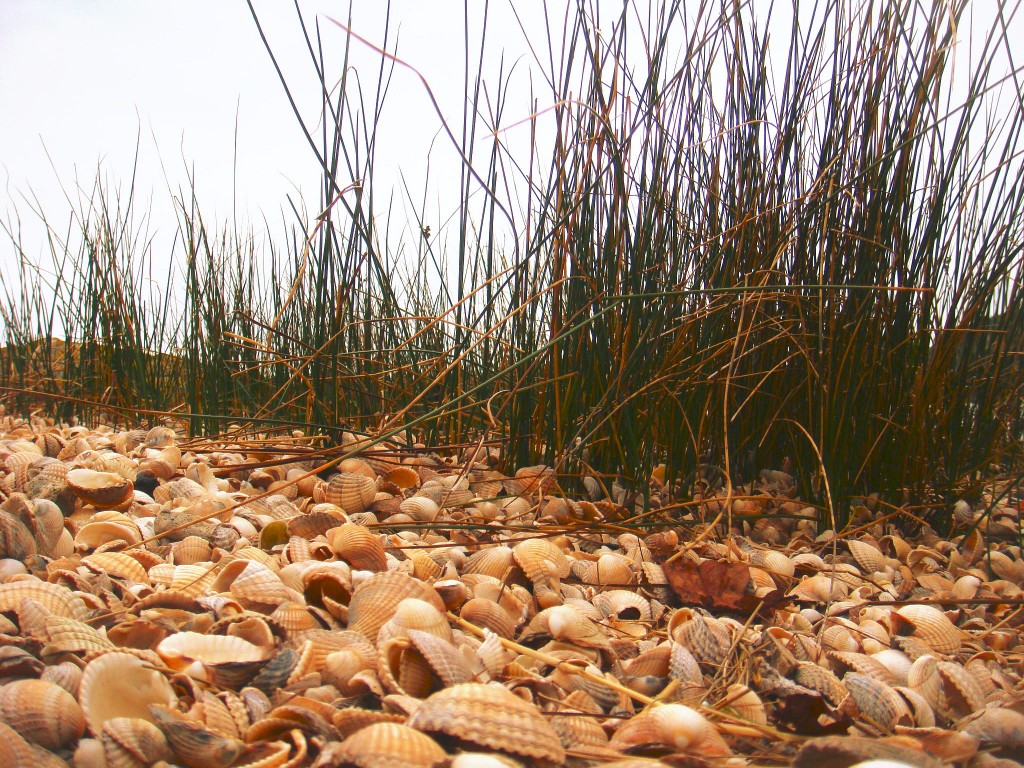 It also made a great sound when you walked on it, there is something really satisfying about crunching your way across a beach full of these sea shells, It made me wonder how crushed sea shells would function as a deep top layer mulch.
It also made a great sound when you walked on it, there is something really satisfying about crunching your way across a beach full of these sea shells, It made me wonder how crushed sea shells would function as a deep top layer mulch.
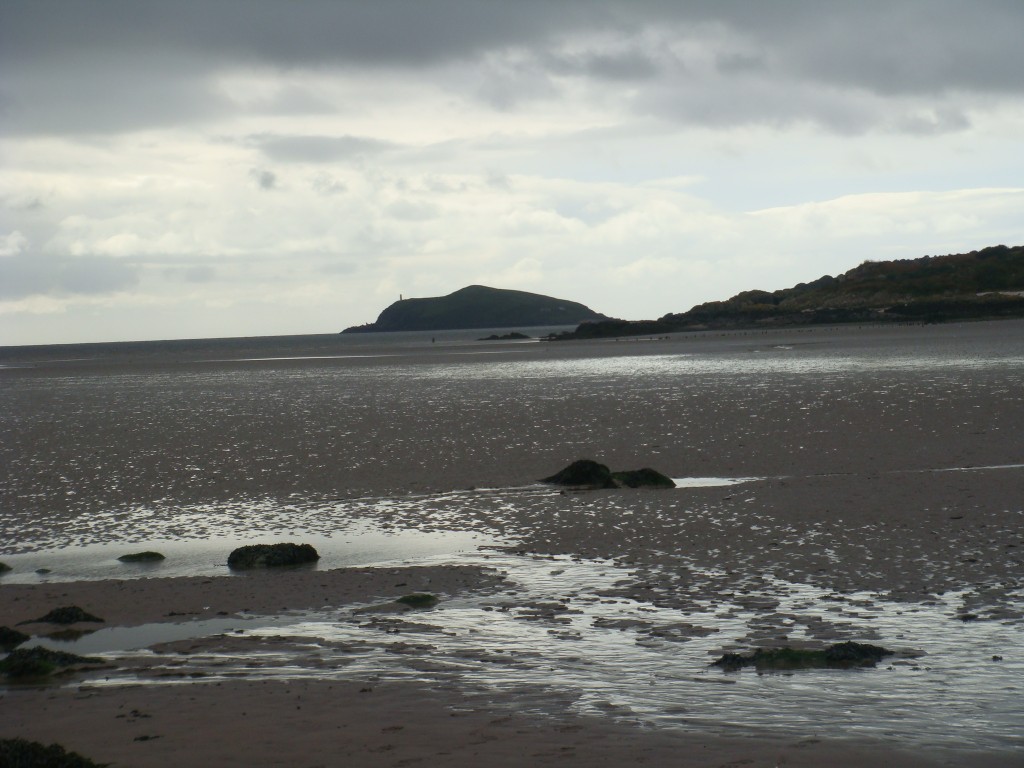 As the tide went out we headed back to the cottage armed with a rather large collection of sea shells’ in a plastic bag. Unbeknownst to us some of the clams in that bag were whole. Although the shells had been washed in soapy water that night and placed in a cupboard, a couple of days of festering later and that cupboard smelled like something you could go through your whole life without smelling.
As the tide went out we headed back to the cottage armed with a rather large collection of sea shells’ in a plastic bag. Unbeknownst to us some of the clams in that bag were whole. Although the shells had been washed in soapy water that night and placed in a cupboard, a couple of days of festering later and that cupboard smelled like something you could go through your whole life without smelling.
After this morning’s “arresting” breakfast, I hopped in the shower and started twirling a bewildering array of controls and dials in an attempt to a) obtain water and b) set the water to a non-scolding temperature (a seemingly impossible task). This took a lot longer than anticipated. Finally stepping under the stream all was going quite normally as showers generally do, until something caught my attention at the lip of the bathtub… and it was quite large. At first I thought my eyes were playing tricks on me, I wish they were. First “over the top” of the bathtub lip came a long extended, searching leg, which subsequently hauled over the abundantly sized body of this…
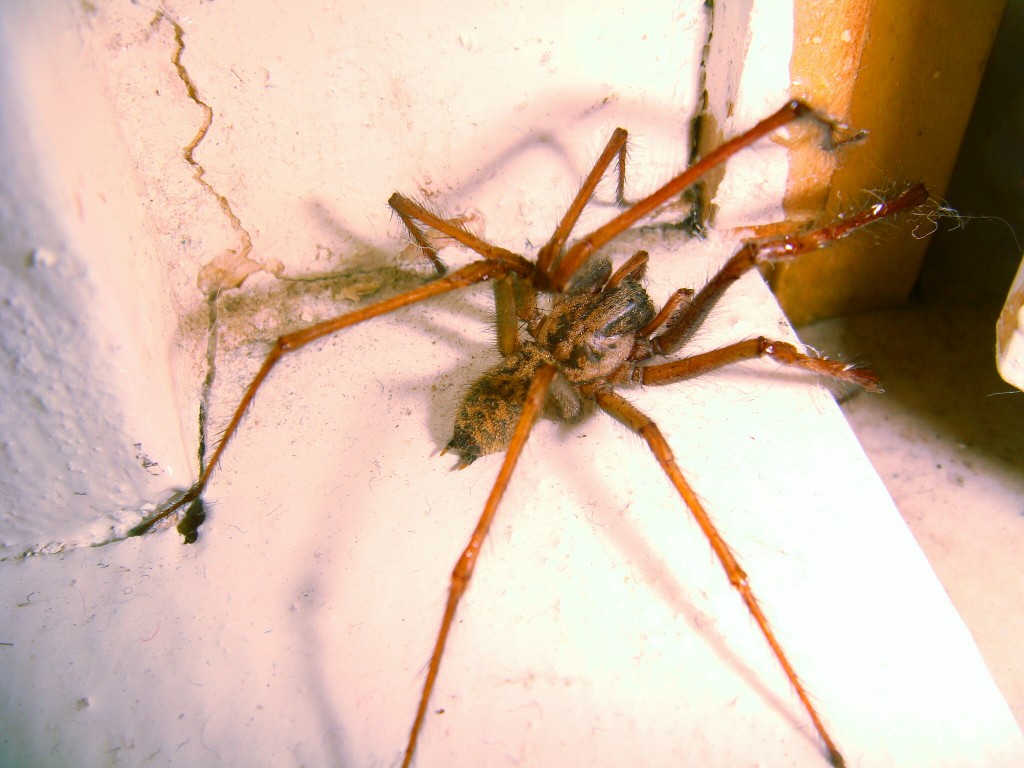 Instinct told me to clamber over to the opposite side of the tub to perform an ungainly escape. I grabbed a nearby towel and inched my way to the bathroom door, I believe I was actually muttering to myself at this point, something like “stay there, just stay there, that’s my boy, no-body’s going to hurt you”. I beat a hasty retreat through the door, and immediately poked my head back around to where I had last seen it, but it had gone! Something about the draft coming in from the door must have attracted it because the next thing I saw was this thing galloping and bounding at full tilt across the bathroom floor (and it could run) directly toward me. I slid down the hallway stairs.
Instinct told me to clamber over to the opposite side of the tub to perform an ungainly escape. I grabbed a nearby towel and inched my way to the bathroom door, I believe I was actually muttering to myself at this point, something like “stay there, just stay there, that’s my boy, no-body’s going to hurt you”. I beat a hasty retreat through the door, and immediately poked my head back around to where I had last seen it, but it had gone! Something about the draft coming in from the door must have attracted it because the next thing I saw was this thing galloping and bounding at full tilt across the bathroom floor (and it could run) directly toward me. I slid down the hallway stairs.
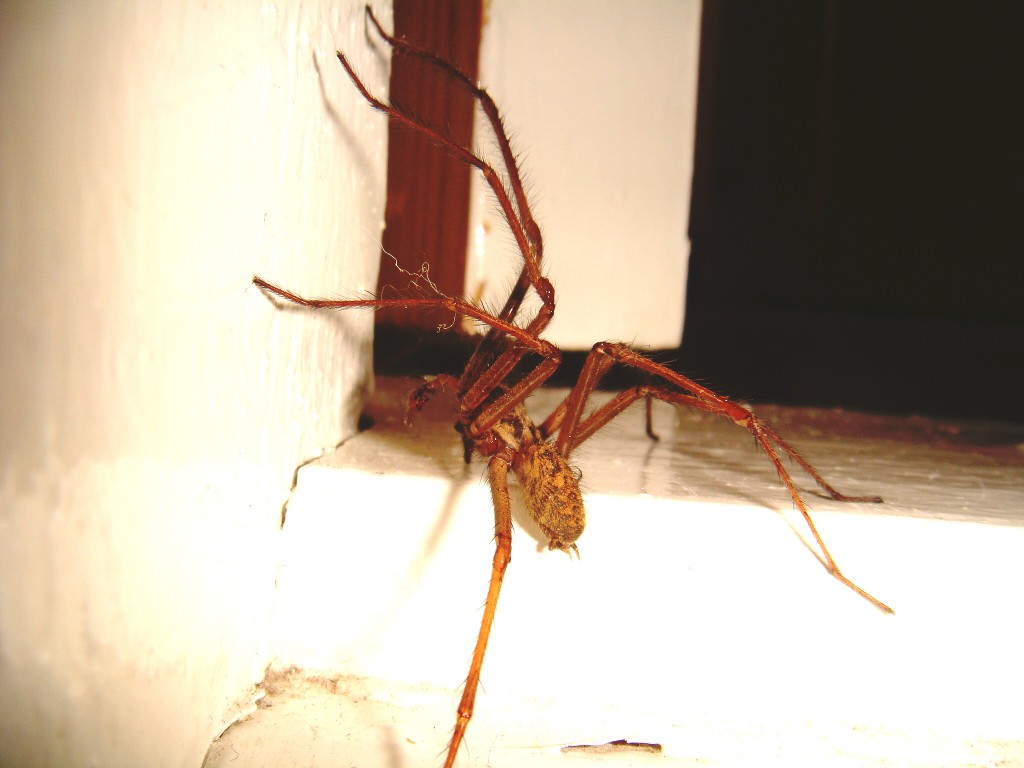 The spider finally came to rest in the corner of the bathroom door where I took these shots before shepherding the creature into a vessel and taking it outdoors…
The spider finally came to rest in the corner of the bathroom door where I took these shots before shepherding the creature into a vessel and taking it outdoors…
Okay so perhaps I was not the one doing the shepherding, but I did throw out explicit capturing directions from the relative safety of the top landing. This was of course a house spider
Tegenaria duellica
and in the UK they can get large…who said everything was bigger in Texas. They become more noticeable in autumn, which is their mating season. The males are often seen scuttling across a room or falling into bath tubs as they move around in search of a female. This one was a male, having longer legs than the female of the species. House spiders can survive for several months without food or water.
After this mornings excitement, I decided I needed to do something calming, I took a walk around the village to see what I could see.
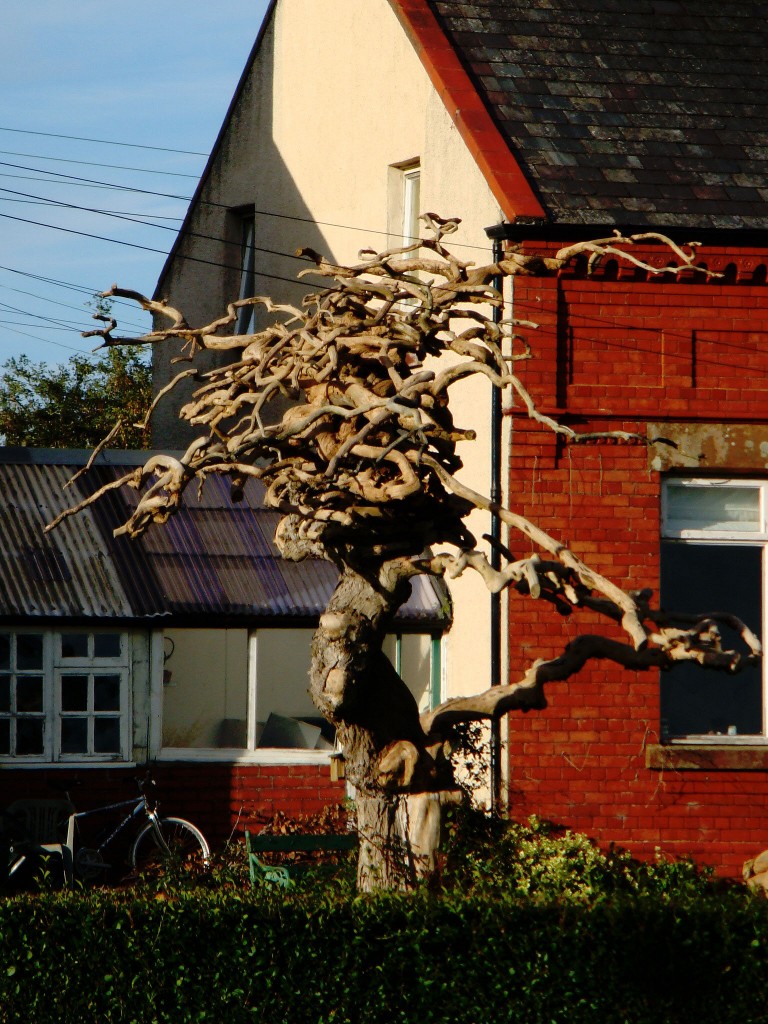
This gnarly old tree caught my attention over the hedgerows.
Around the corner from our cottage there were a few cooking apple trees and a couple of red and green crab-apple trees packed with fruit, we sneaked a couple of the cooking apples,
 and ate them with grimacing faces.
and ate them with grimacing faces.
Here is the green tree.
A central flower bed in what used to be an old Victorian bowling green immediately caught someones attention, she always gets onto me for not planting colorful flowers, I just find it hard to get excited about such masses of gaudy colors. Pride of Barbados and Canna Lily are just about my limit for hot colors.
In front of the village are large expanses of grasses, no wonder the rare Natterjack Toad toads like this area.
Pampas and Miscanthus grasses get to ridiculous sizes here, in the relatively mild and wet climate. Look at these two monsters guarding the corners of these two neighborhood gardens.
Gunnera manicata
or giant rhubarb, and aptly named dinosaur food were striking. Each spike was host to thousands of tiny little copper seeds. The leaves on this one had seen better days, it will die to the ground in Scotland in the Winter.
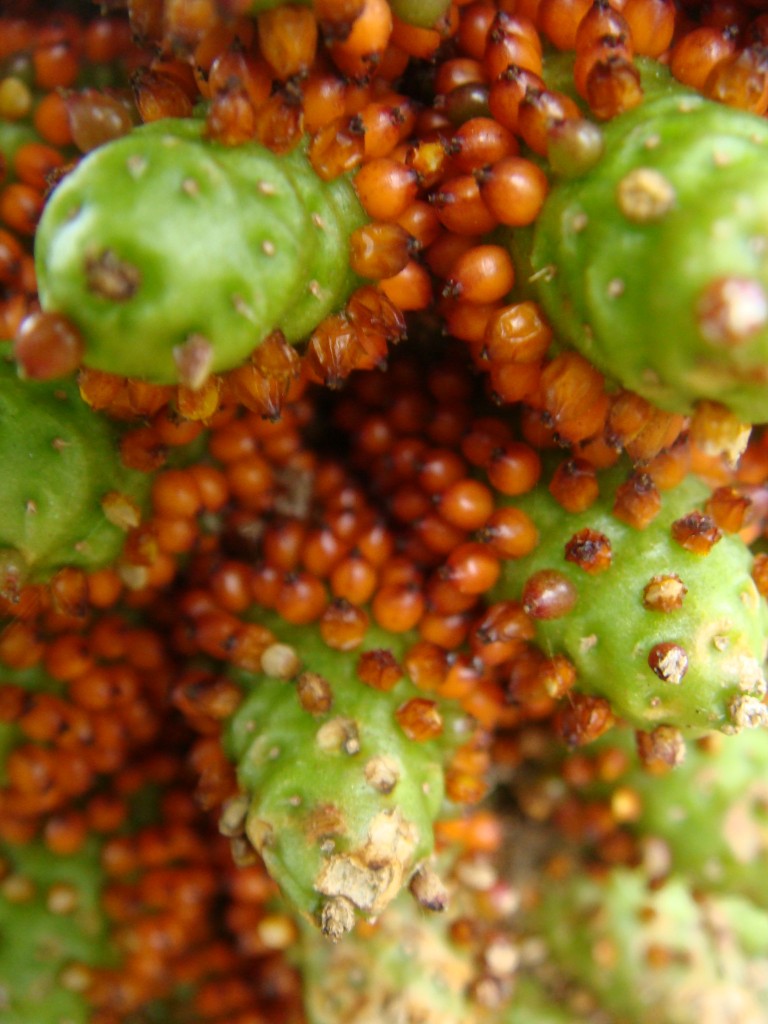
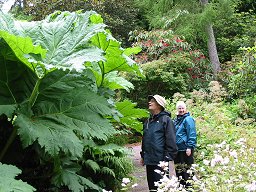
Did I mention just how big these can get!
Down The Burn, Davie
As down the burn they took their way,
And thro’ the flowery dale;
His cheek to hers he aft did lay,
And love was aye the tale:
With “Mary, when shall we return,
Sic pleasure to renew?”
Quoth Mary-“Love, I like the burn,
And aye shall follow you.”
Robert Burns.
I finished my walk around the village, and paused on this bridge overlooking the burn, the thought of the spider still fresh in my head. My mind wandered to another spider of legendary status, a spider that purportedly inspired King Robert the Bruce I in a cave only a few miles from here…
Robert was Knight and Overlord of Annandale. In 1306 he was crowned King of Scotland and henceforth tried to free Scotland from the English enemy. After being defeated at a battle, Bruce escaped and found a hideout in a cave. Hiding in a cave for three months, Bruce was at the lowest point of his life. He thought about leaving the country and never coming back. While waiting, he watched a spider building a web in the cave’s entrance. The spider fell down time after time, but finally he succeeded with his web. So Bruce decided also to retry his fight and told his men: “If at first you don’t succeed, try try and try again”.
Old legend.
And the sun went down once again on the cottage, only this time it will come up in my final Powfoot post.
Stay Tuned for:
“On the Bonnie Banks, the sequel”
All material © 2009 for eastsidepatch. Unauthorized
intergalactic reproduction strictly prohibited, and
punishable by late (and extremely unpleasant)
14th century planet Earth techniques.

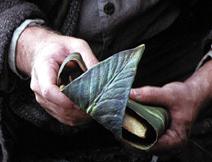
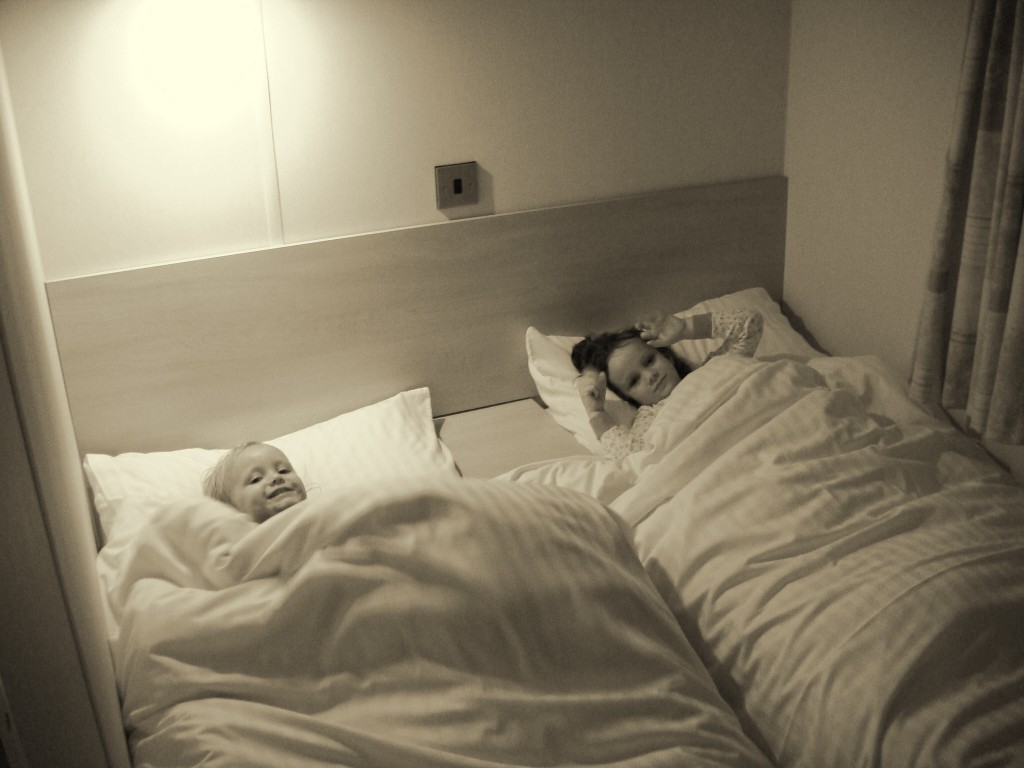
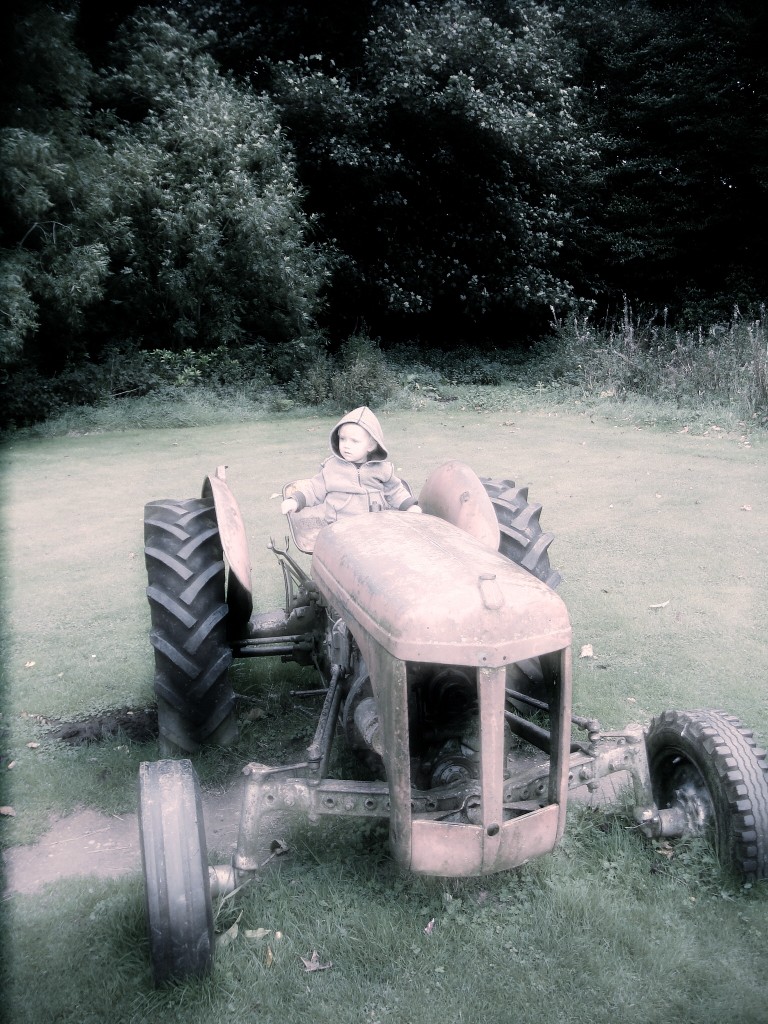
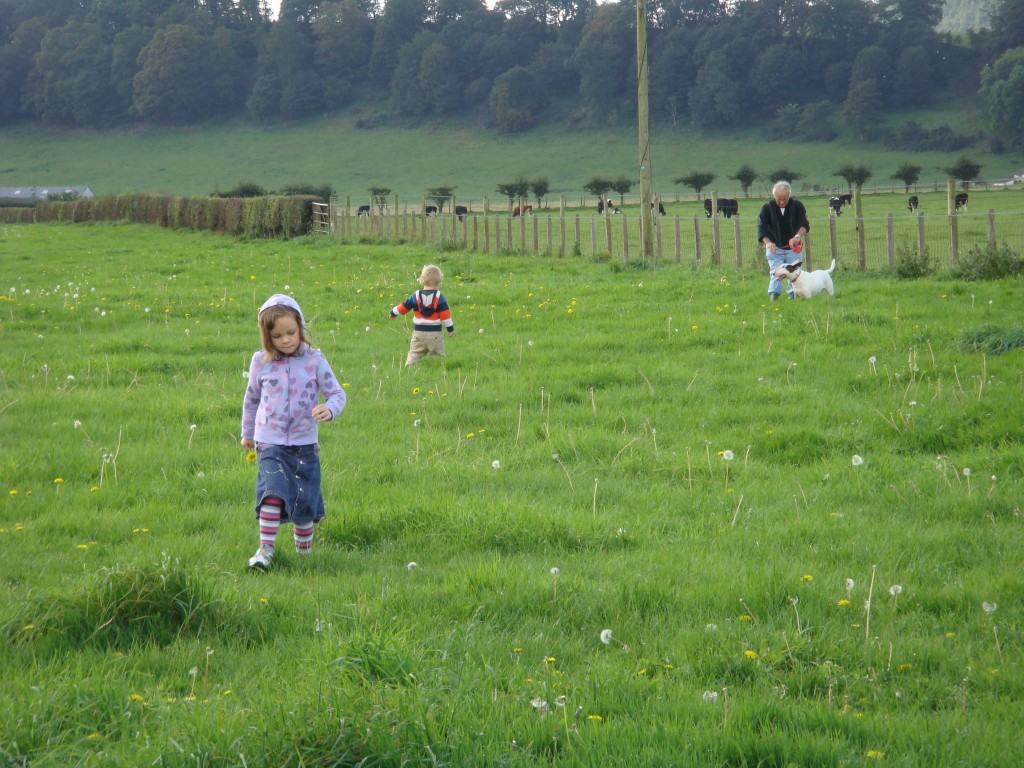

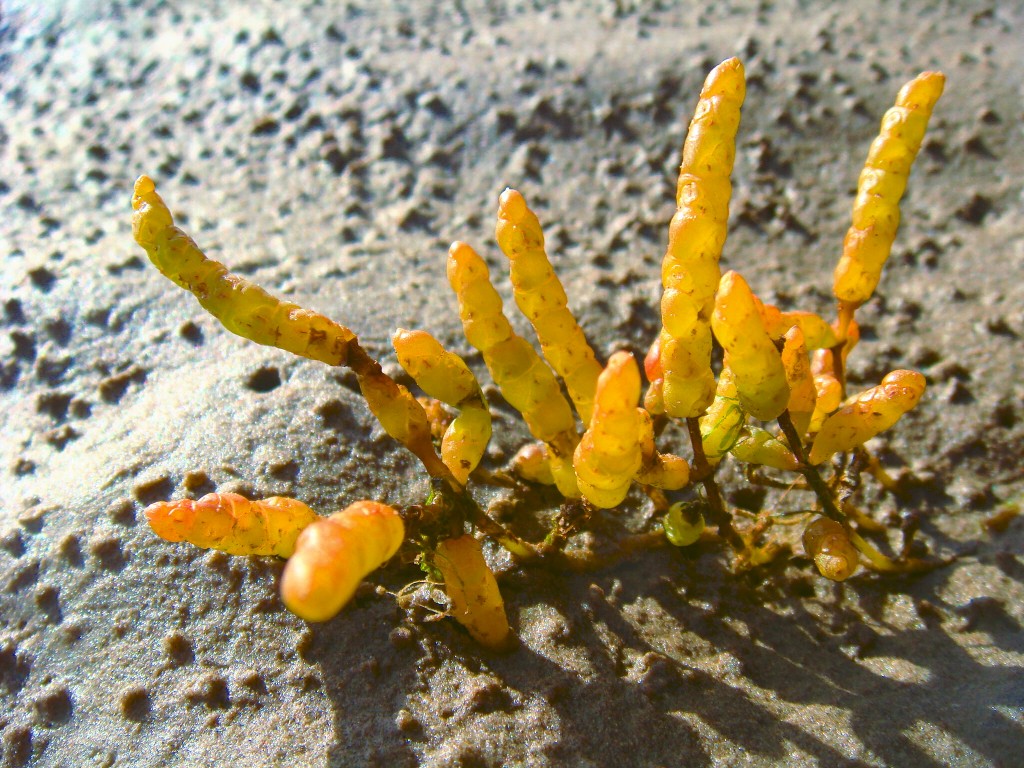
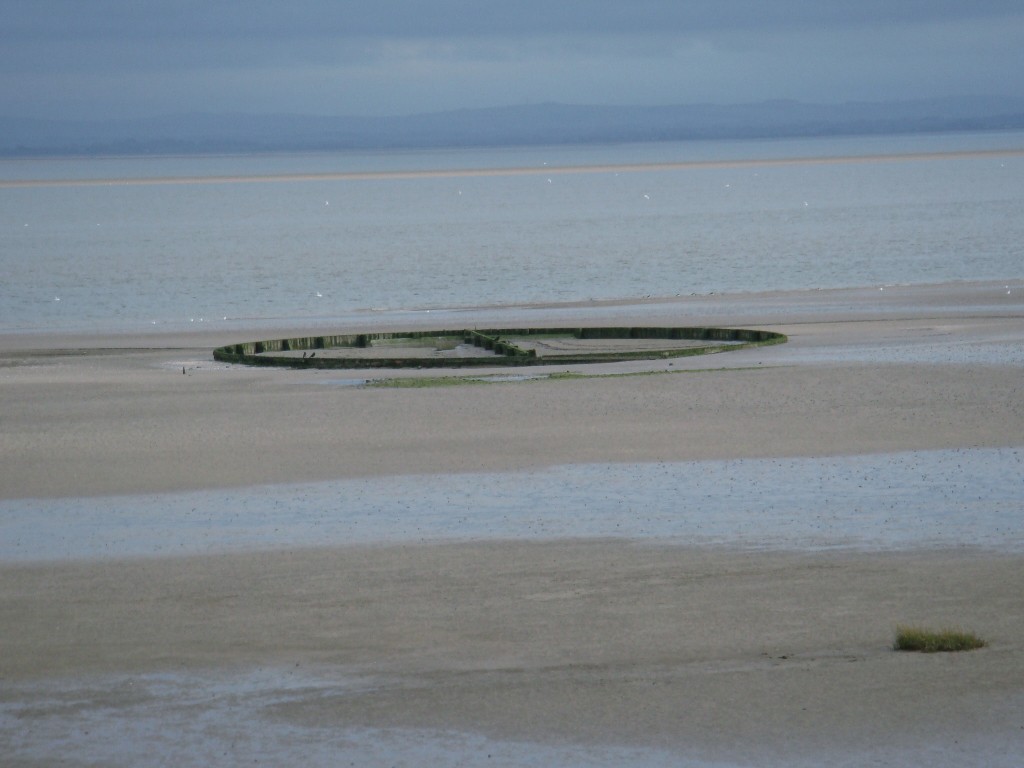
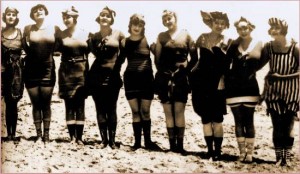
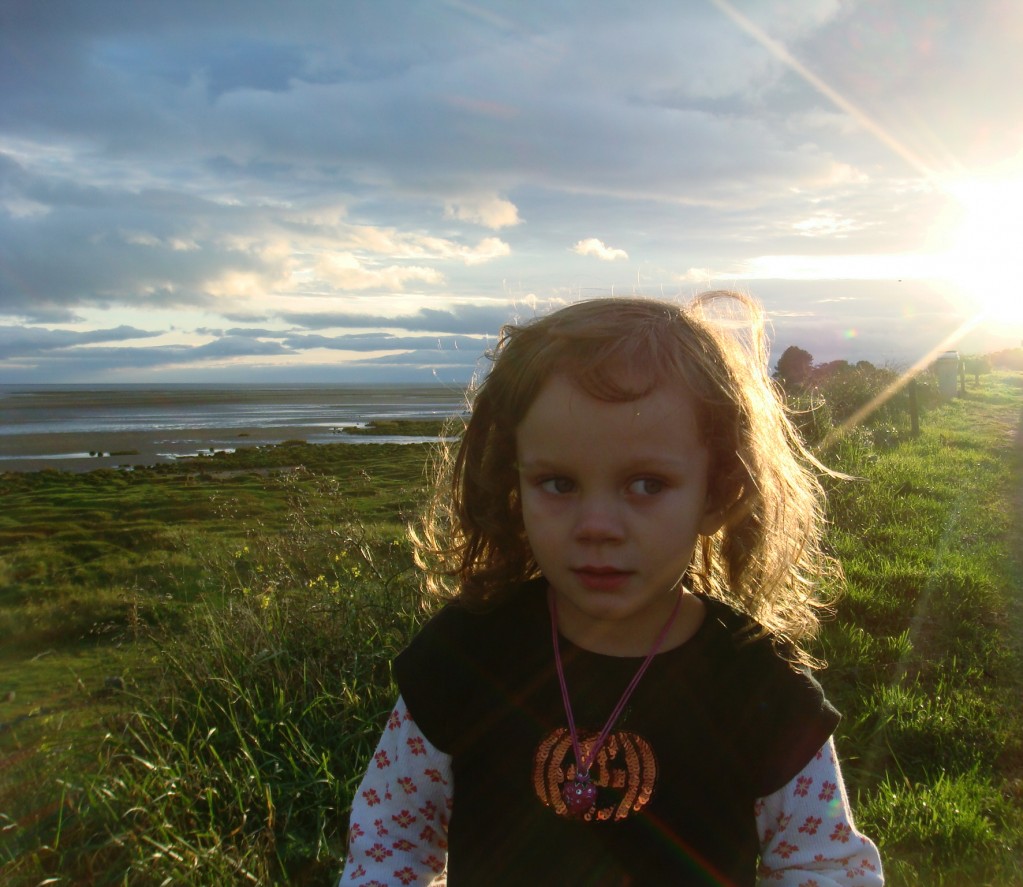
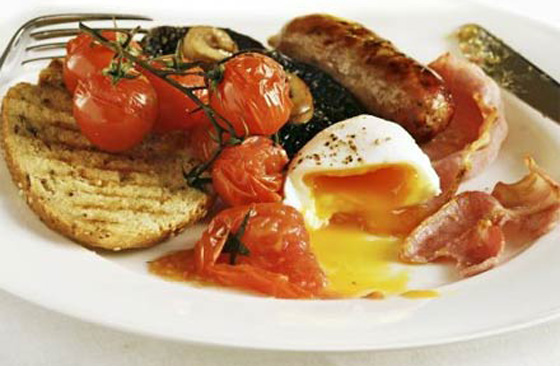
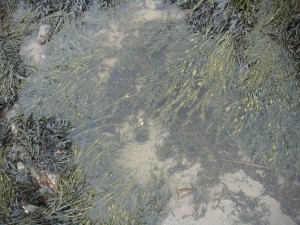
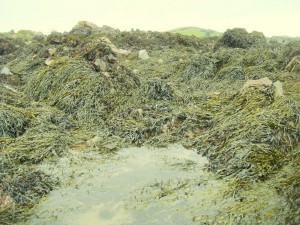
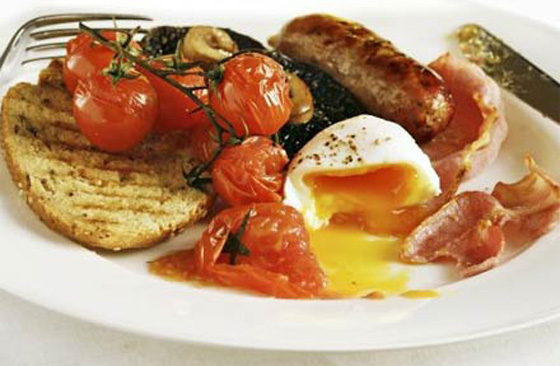
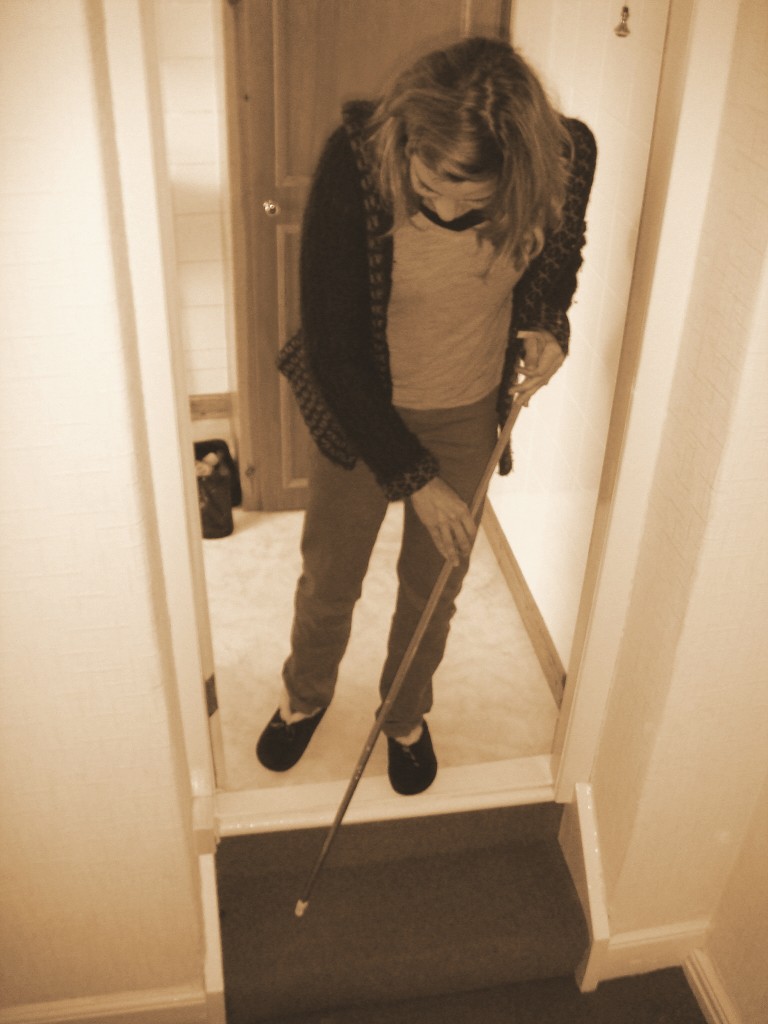
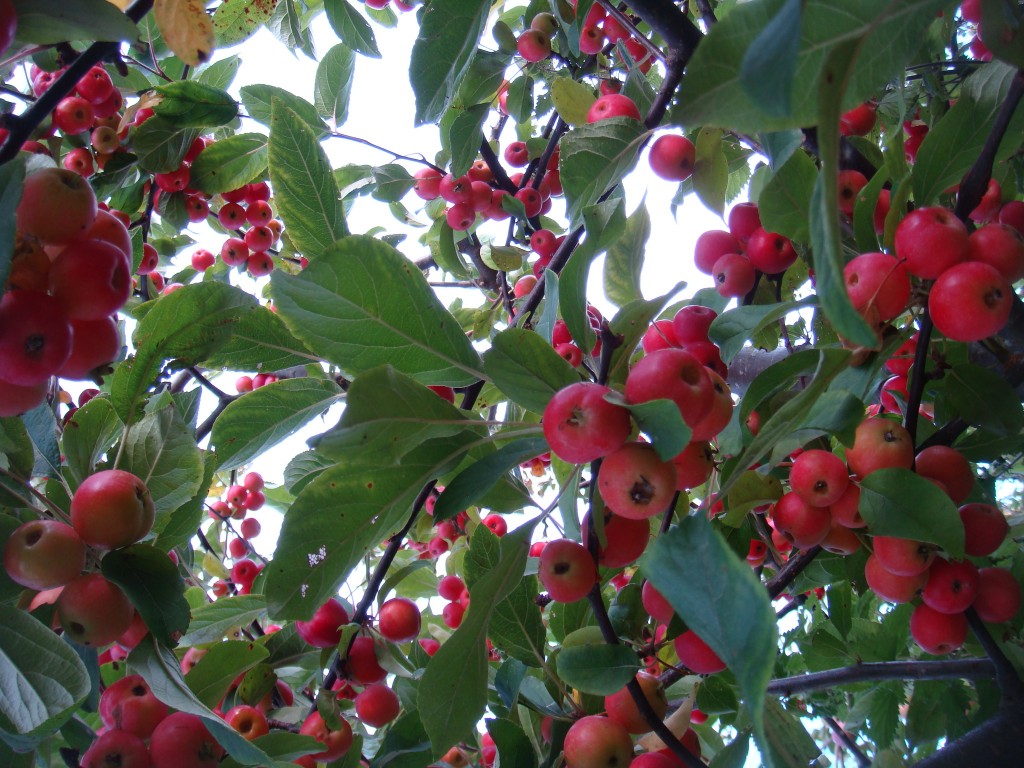
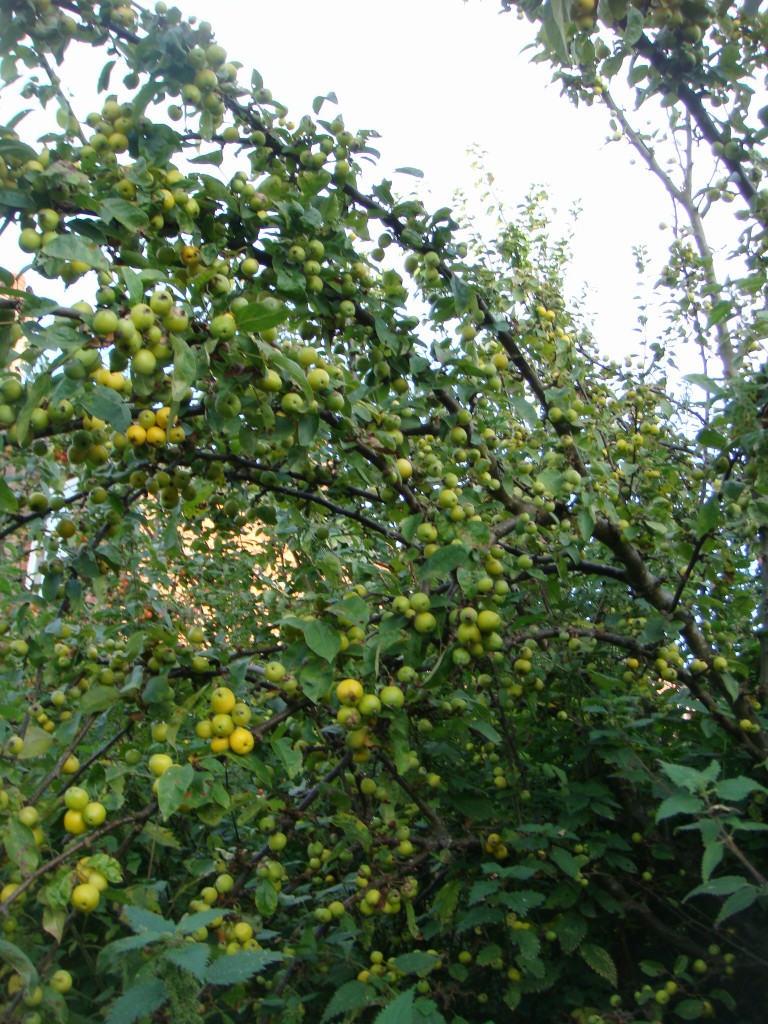
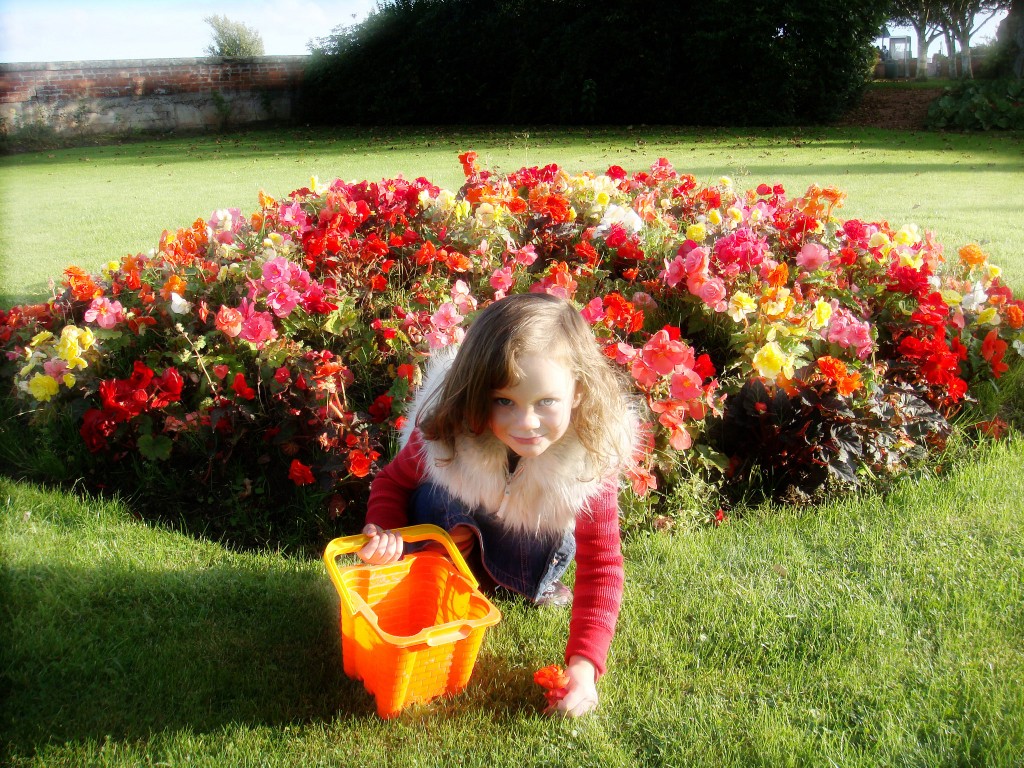
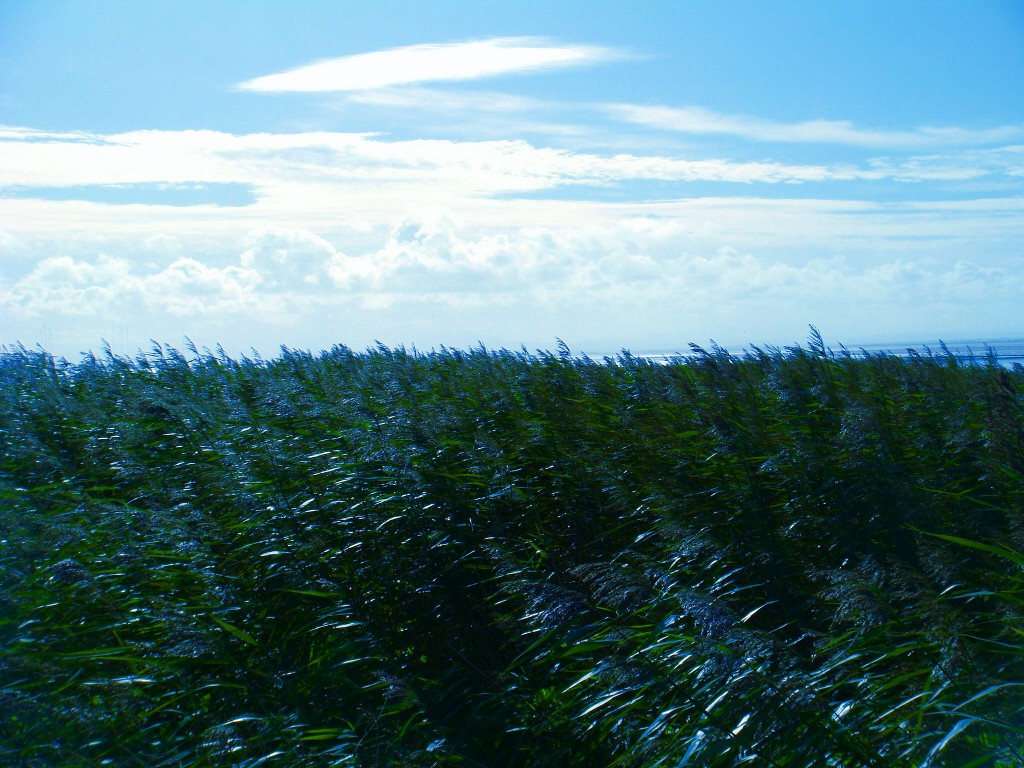
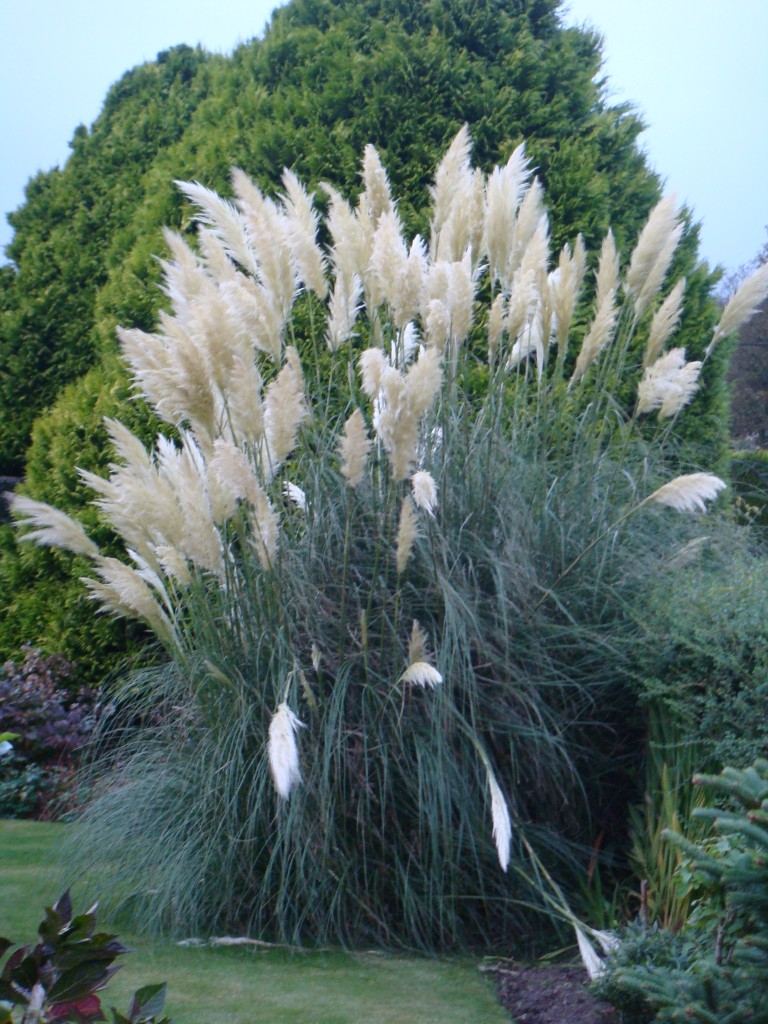
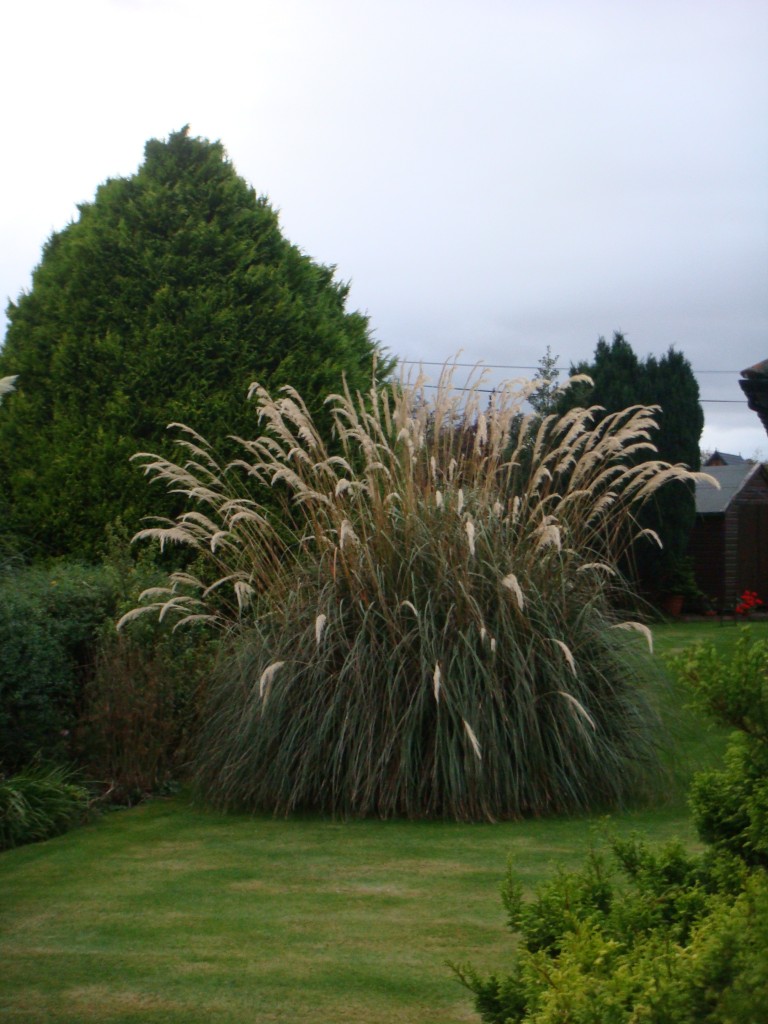
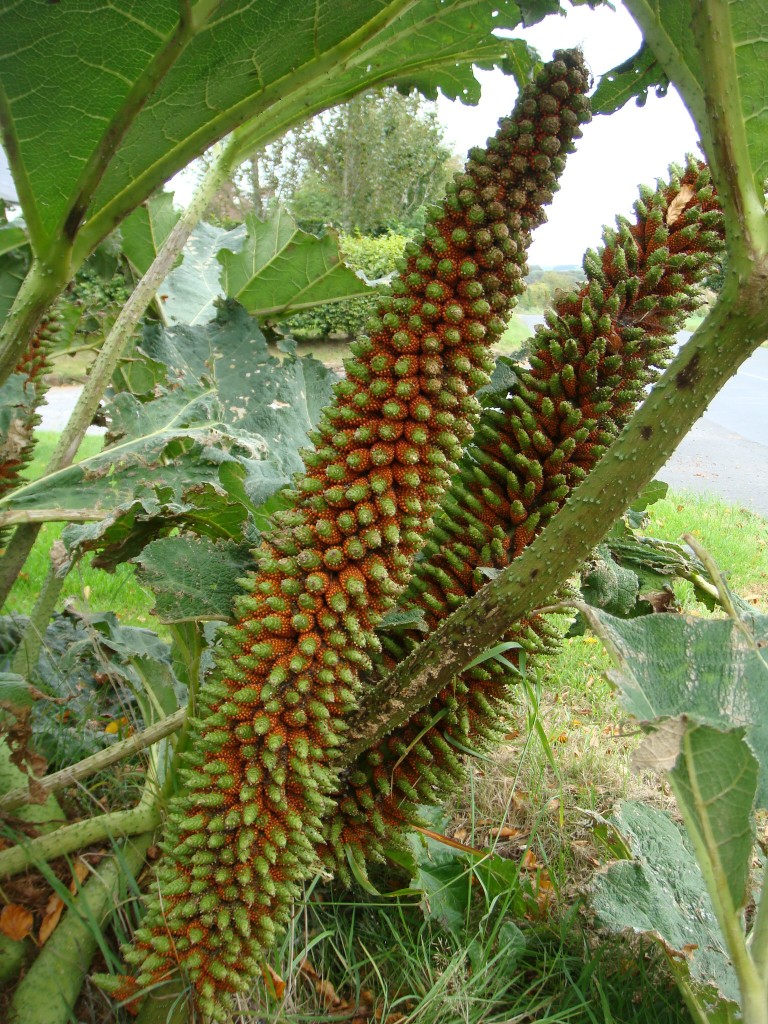
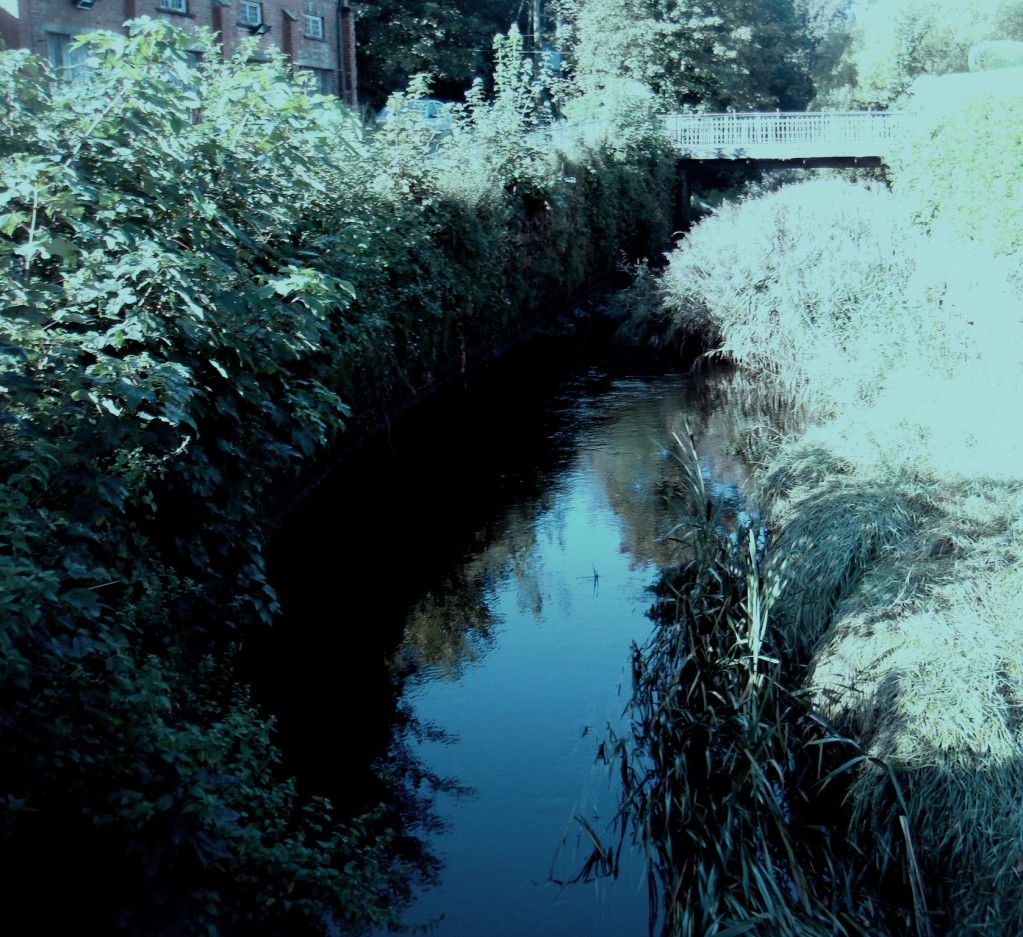
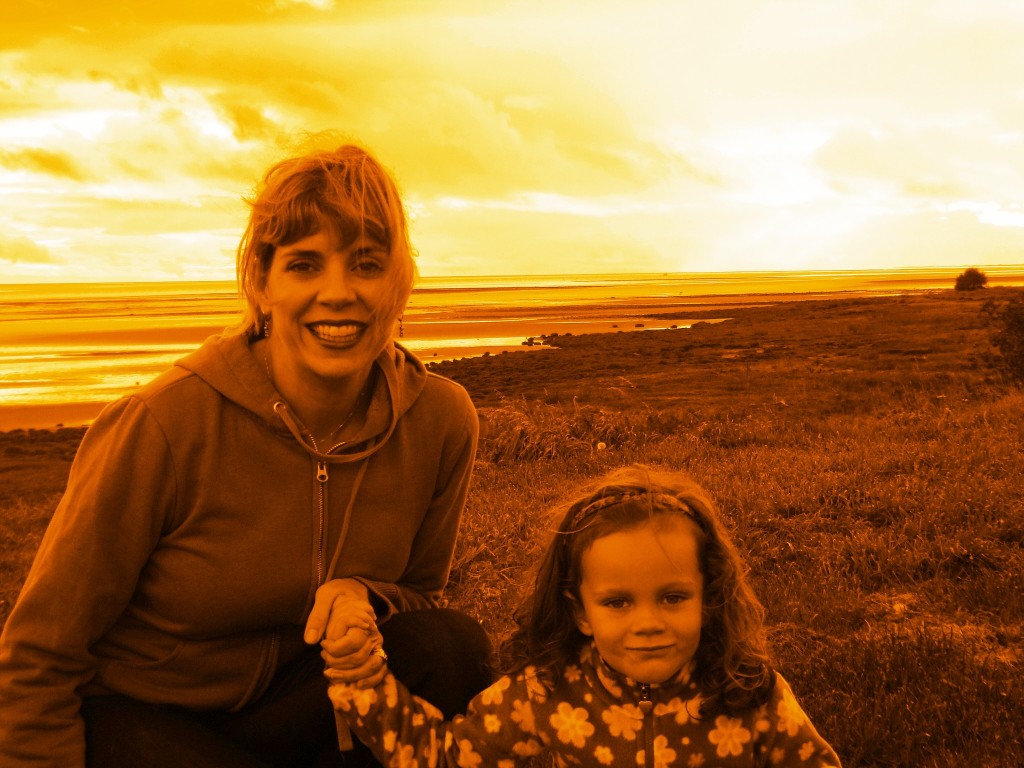
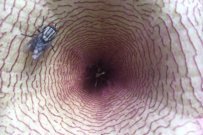
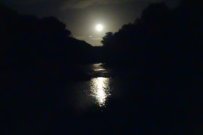




























































Comments on this entry are closed.
Thanks for taking us along on your holiday in Scotland. I can’t believe you go to car boot sales too. I’m usually hunting for garden books with much success. They sure do eat a lot of cockles in Scotland. Unless they all got washed up from across in Cumbria. A lot of cockling going on there too. Ye gads- I think that creature will have just about convinced everyone over here to leave Scotland off their itinerary. At least to stay away from the holiday cottages. I can almost smell all that seaweed. I’m from the Fylde coast and seaweed washes up on the beaches there too, especially after big storm. Looking forward to part 2.
Hi Jenny.
I really enjoyed the car-boot sale, my sister is an avid “booter” and is usually one of the vendors. It is amazing what you can pick up for near next to nothing! My eldest lived in that fur tank-top we picked up the whole time we were in Scotland. I also picked up a UK wildflower ID book for 50p…score!
Yes cockling is a big thing in South-West Scotland, sadly, only a few years ago, 21 Chinese cockle pickers in Morecambe Bay died when the tide caught them out. It is a trecherous activity, usually performed at night to avoid detection (most of the immigrants are in the UK illegally and working the cockles for minimum wage). While I was visiting the now defunct bridge I could also see a couple of boats dredging for cockles in the estuary, spewing out a plume of back fumes against the blue sky, yes I said blue sky.
Ha! That house spider was a whopper! The biggest house spider I have ever seen to date. This one was actually the second one we got out of the bathroom. We actually stayed in two different cottages during our trip and we loved them both. The first one even had a real fire, which, as you can imagine was a novelty lighting at this time of the year.
I really liked Rockcliff, lots of exploring to be done, the kids loved it. The combination of the slippery seaweed and the razor sharp rock formations was a treacherous combination though. I miss the coast.
ESP.
It’s good to have you back, ESP. The blogosphere just wasn’t the same without your rib-tickling posts. But yeesh that house spider! How big across was it? It’s hard to tell from the pictures.
Hi Pam.
It is good to be back in the land of technology. There was no connectivity in Powfoot, no phones, no e-mail, no nothing. It was a nice break for a while. The house spider was, at a guess, three inches across – leg to end of lanky leg. These spiders do not usually bother me, having grown up around them, but there was something about the way this one came up over the top of the tub that was reminiscent of a bad horror movie…Brrr!
It is good to be back in Austin, but the weeds, the weeds and the amaranth…how fast they have grown!
I have my work cut out.
ESP.
Wow, it looks like you guys had great fun in Scotland! Thanks for sharing. On a sort of side note: I’ve begun collecting the shells from the area streams and lakes whenever I visit, no more than a handful each time, to use as a walkway mulch for my yard. I have about a foot square section already covered in less than an inch of the shells and nothing has grown through them yet. Mind you, I’ve only had them there for about 4 months so far.
Hi Leah.
We did have a lot of fun in Scotland, thank you. I had a feeling that these cockle shells would make a great natural medium for mulching,thanks! I only wish that I could have brought a ton or so of them back with me. If I lived and gardened in the Solway area, I would for sure give this medium a weed suppressant try.
Regards, ESP.
Hi Philip- I didn’t mention the tragedy in Morecambe Bay but heard all about it from my mother. Very sad. I saw someone mention the cockles as mulch. I think we could skip that one in Austin. We already have too much lime in the soil, don’t you think?
I had heard about the tragedy a while back, but I found out a lot more writing this post…horrible.
While I was near Rockliff I did notice a house that had used the cockle shells as pathways, it looked really good, I knew I should have taken the picture!
ESP.
I am so McGrateful that you took us along on your McFabulous vacation. I especially McAdmired the beach shots and that spider was enough to give me McAracniphobia.
Hi Les.
I am so McHappy you enjoyed the journey and did not cancel my feed for inactivity!
That house spider is still present in my psyche it seems, only today I had a conniption in the shower thinking something was walking on my shoulder. It is funny how these things stay with you. I just hope that one of these spiders did not climb into my suit-case, lying in waiting to continue the horror story!
ESP.